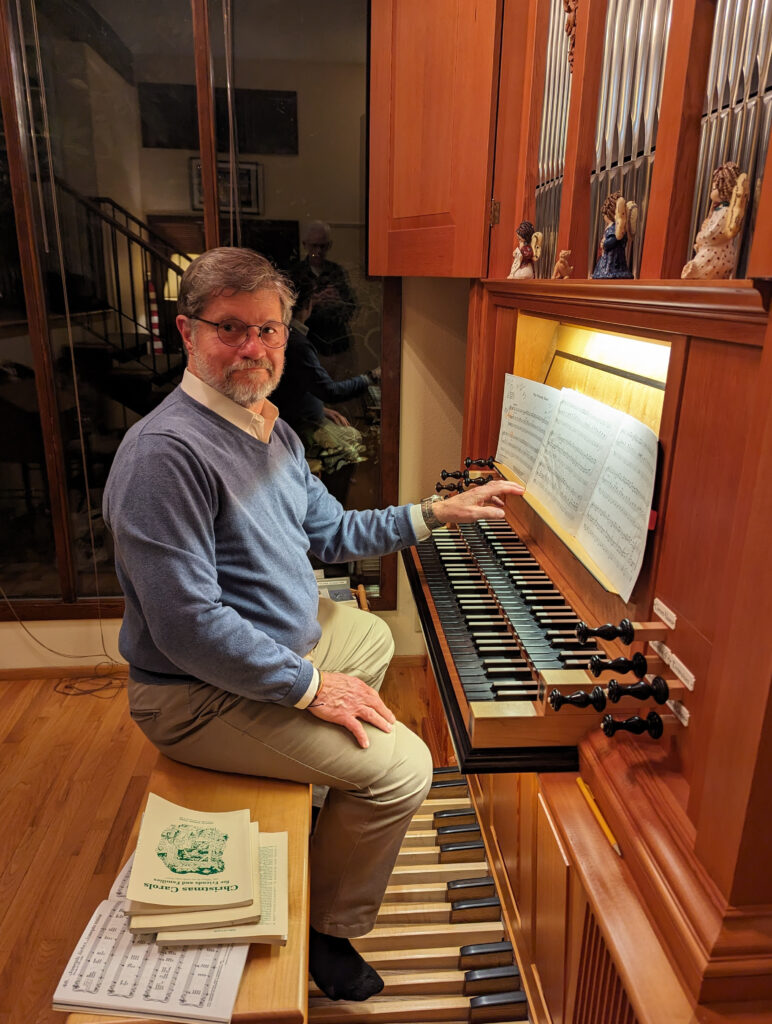
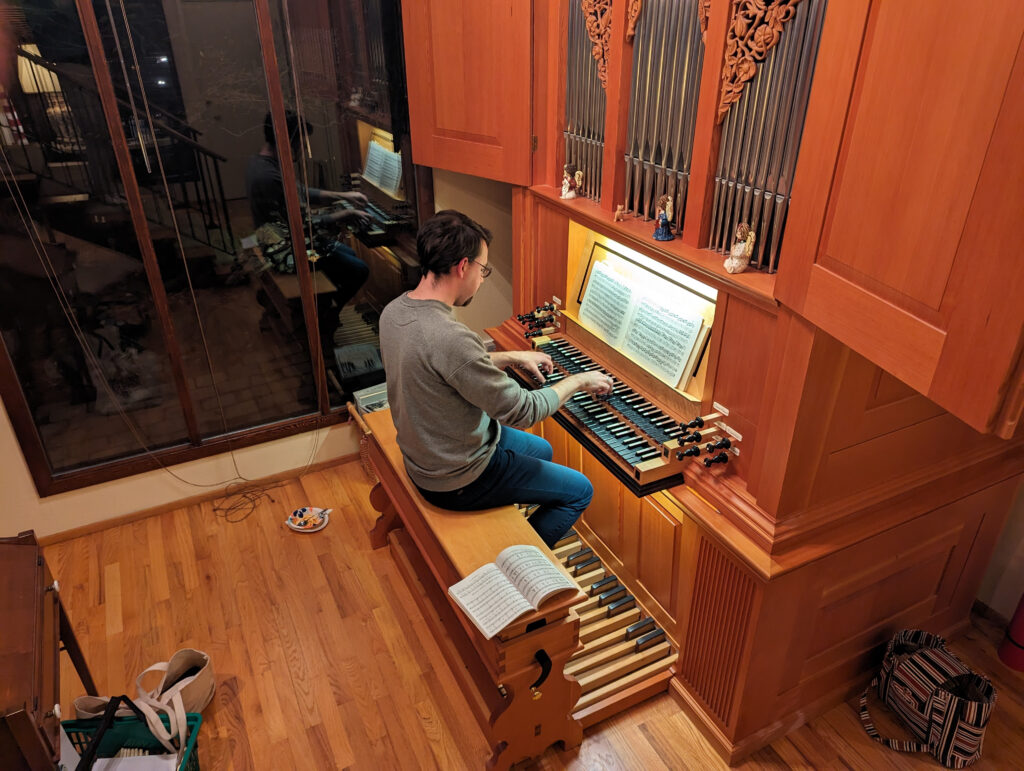
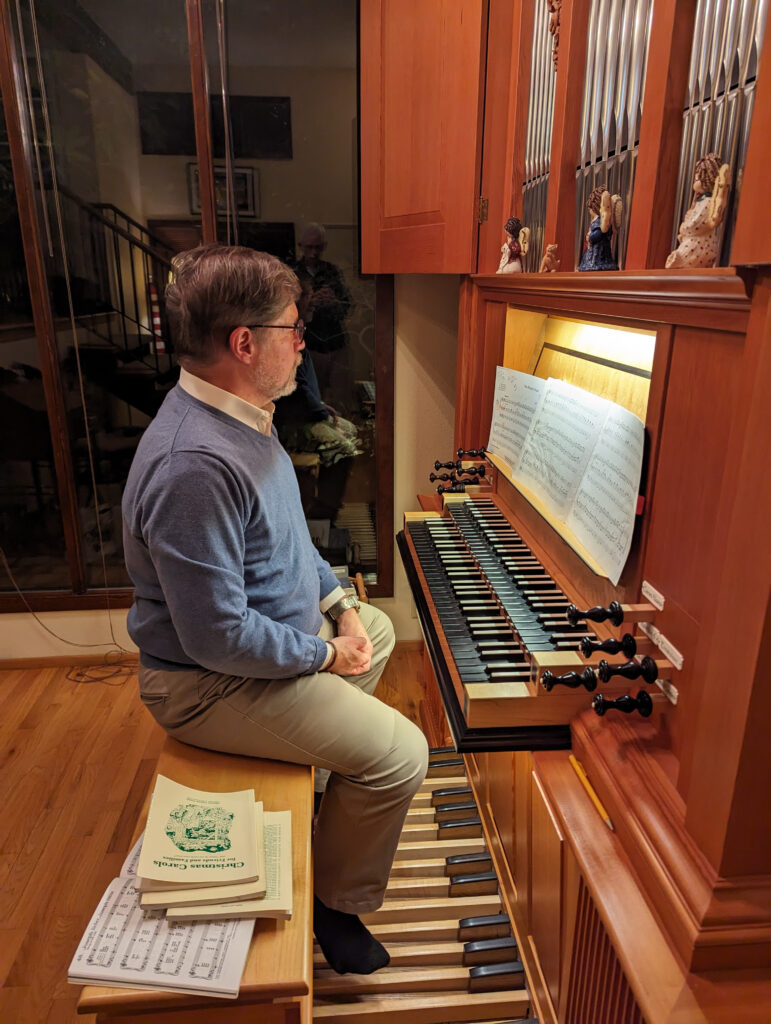
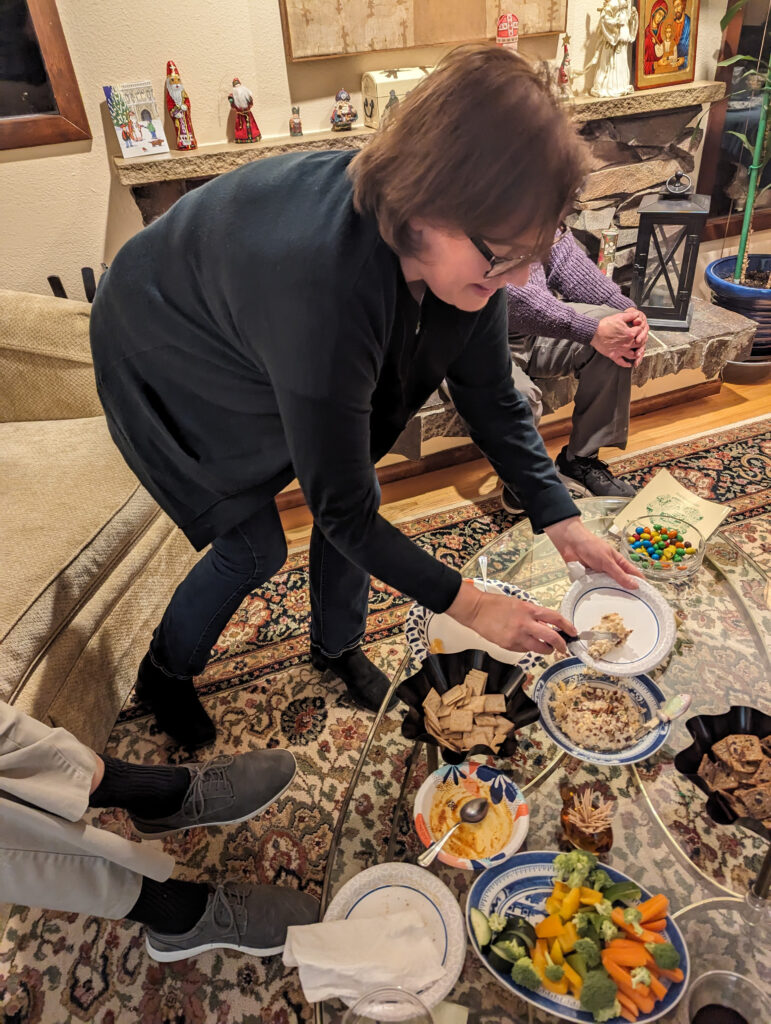
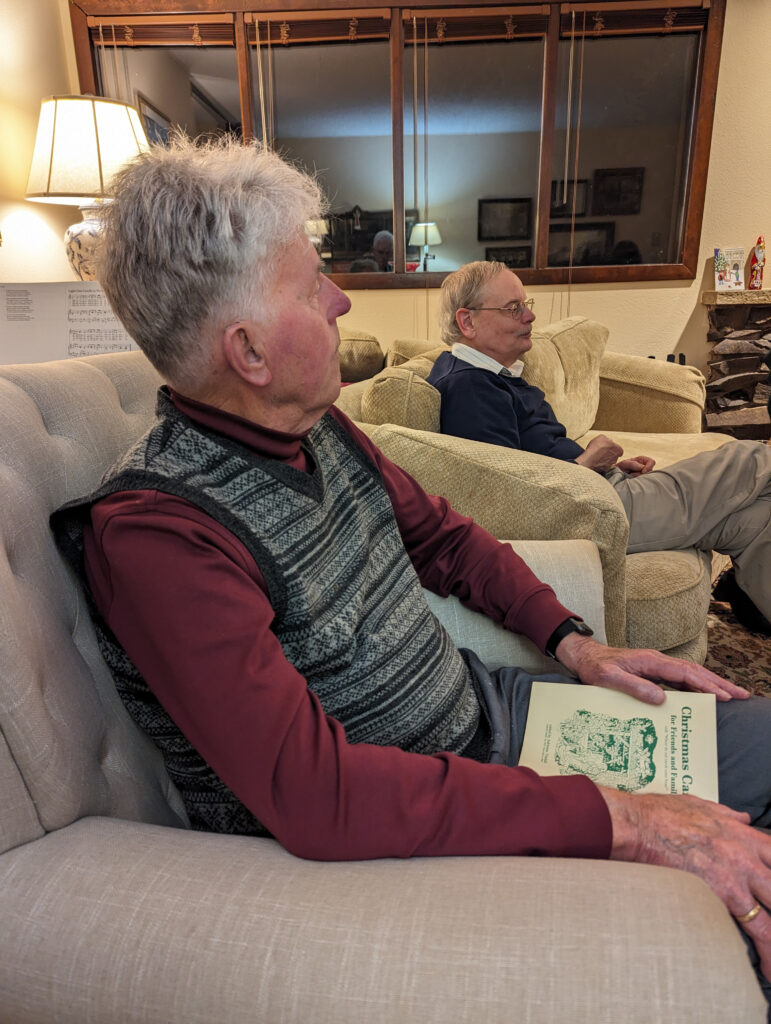
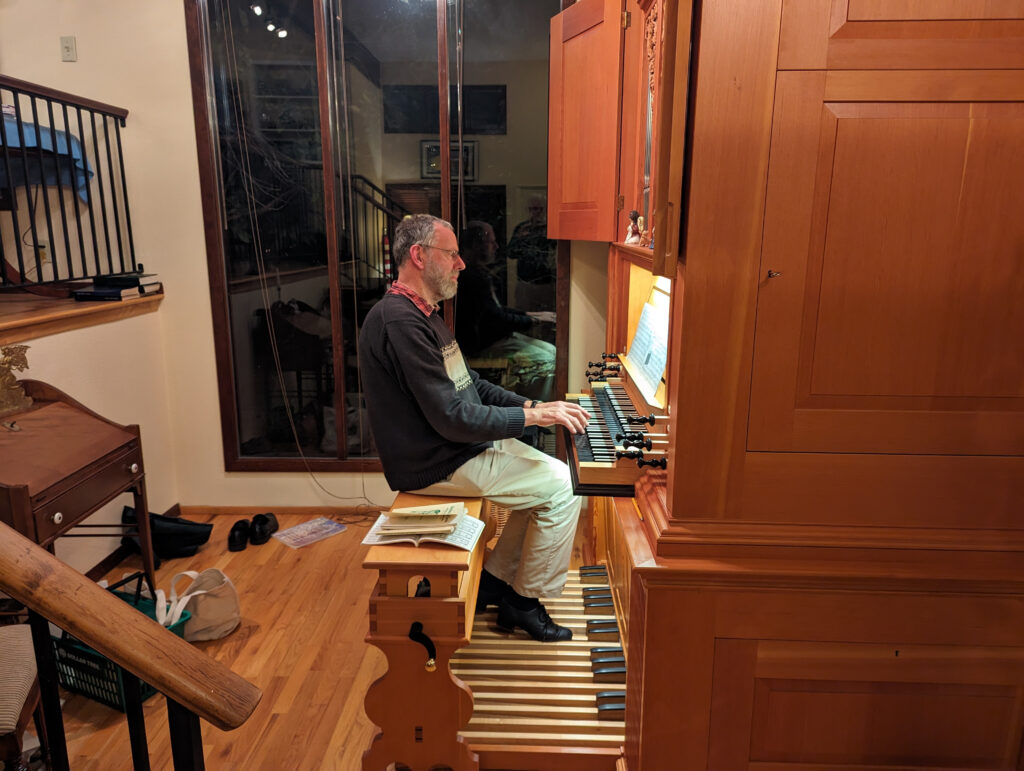
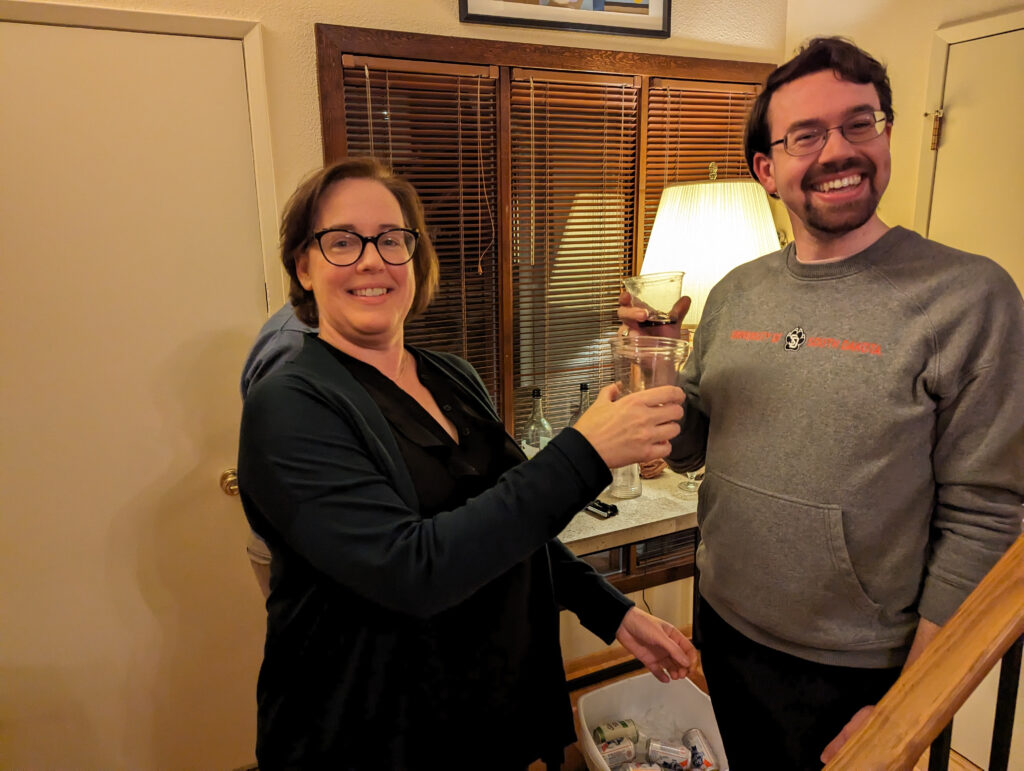
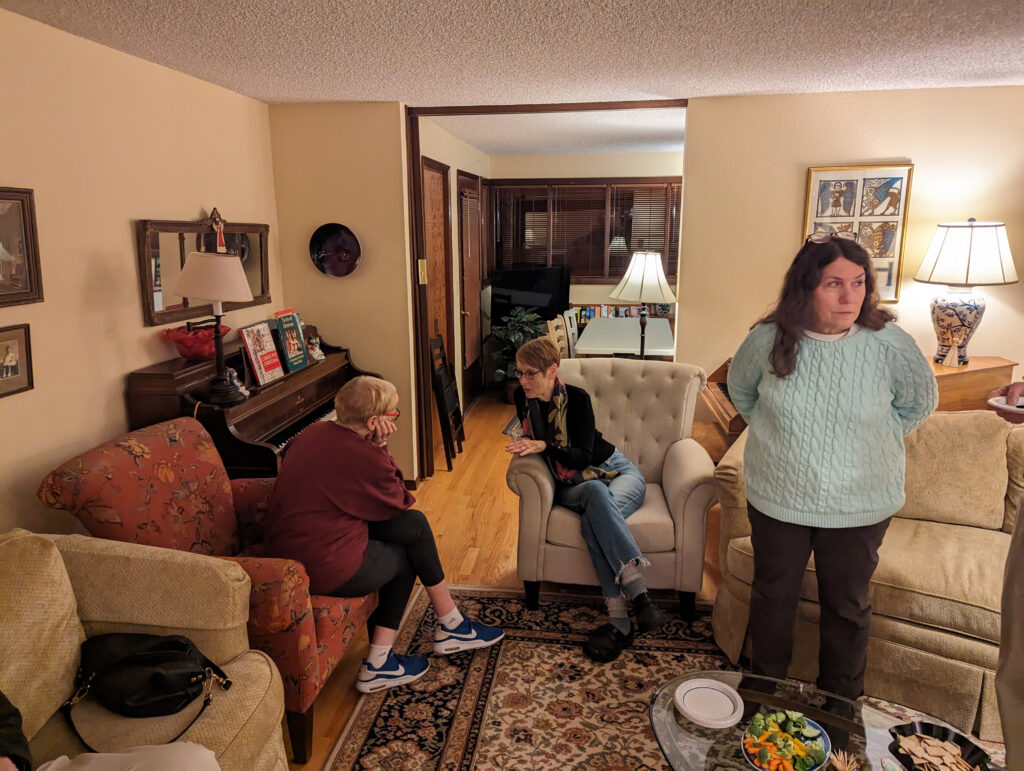
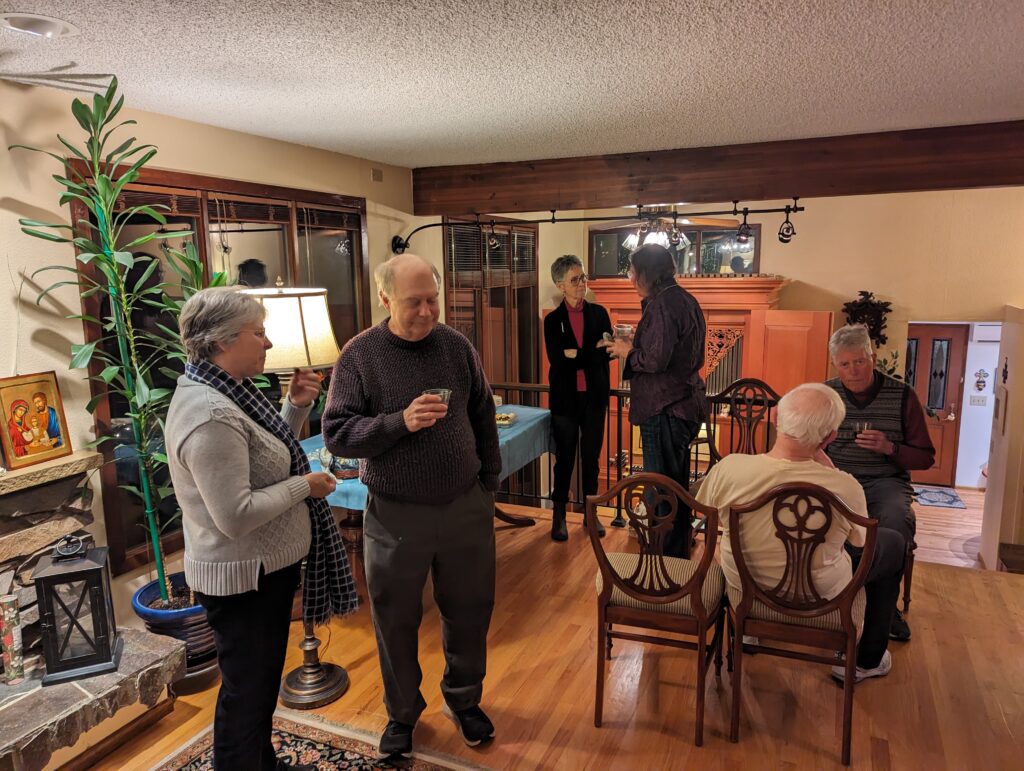
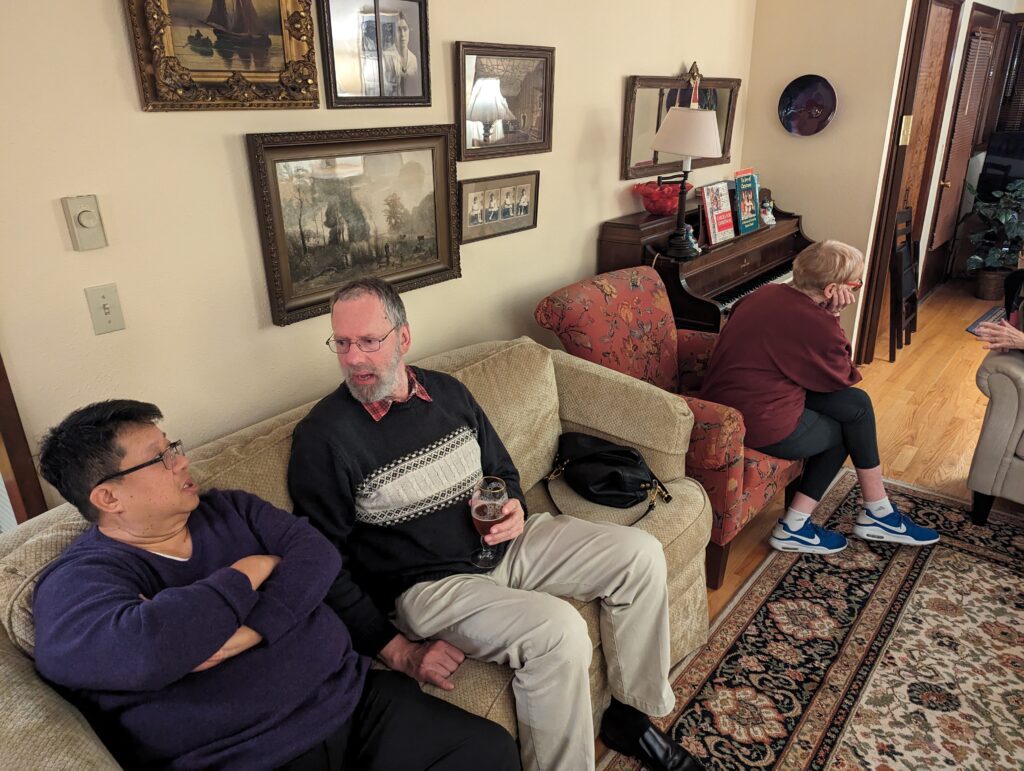
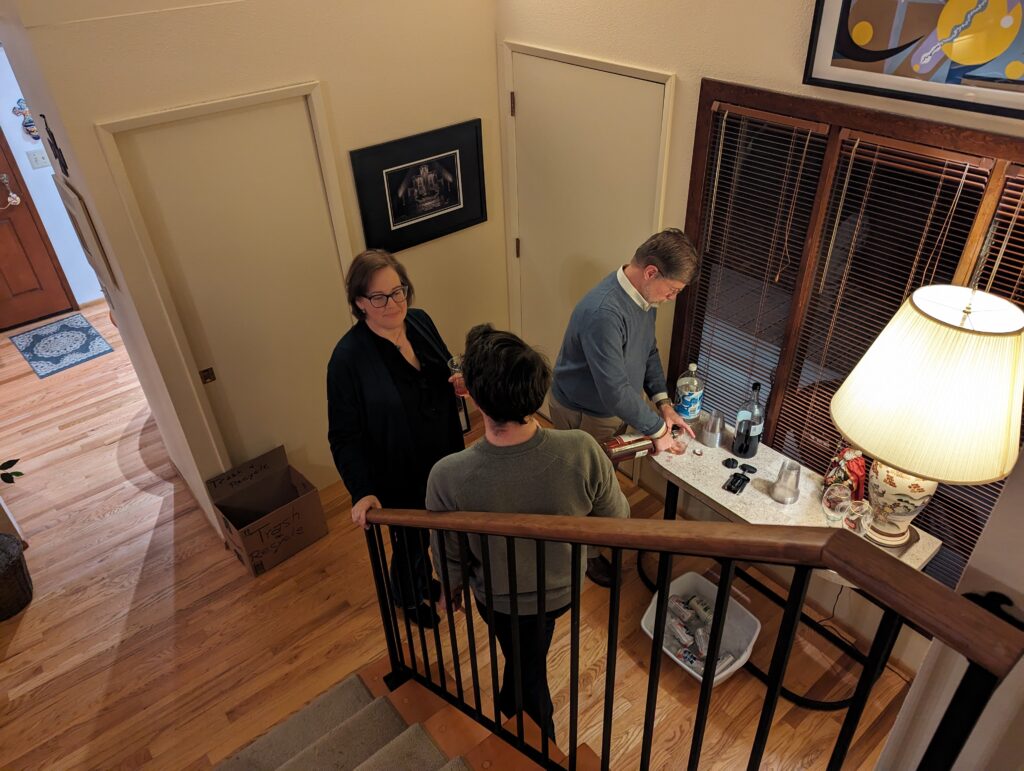
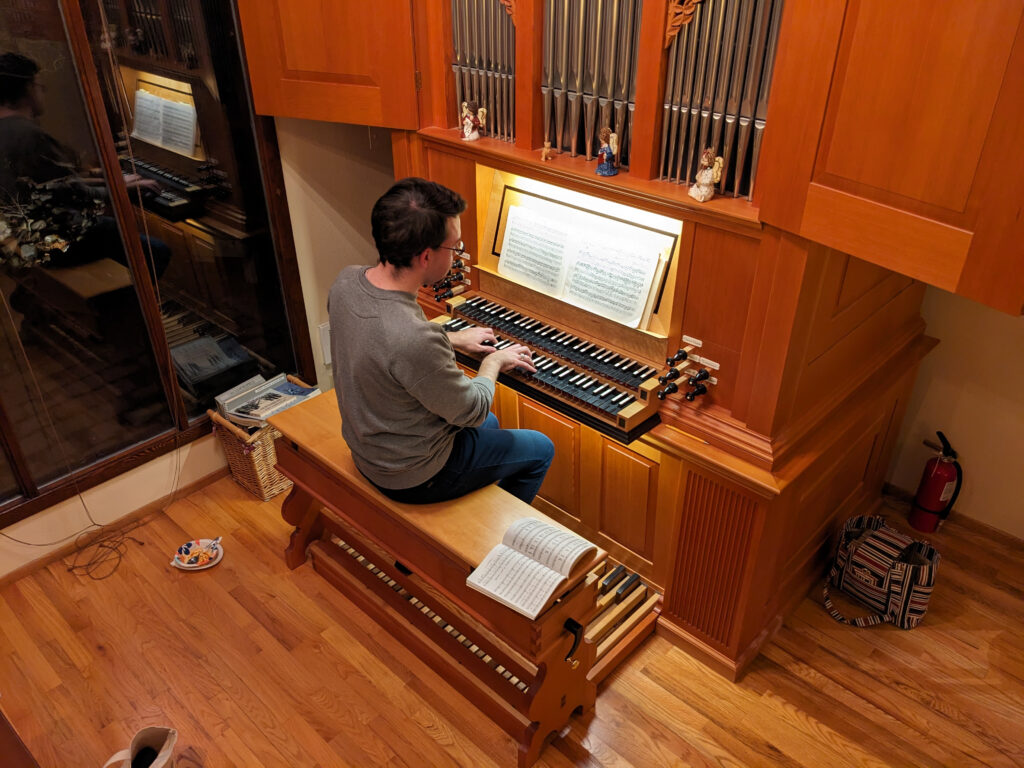
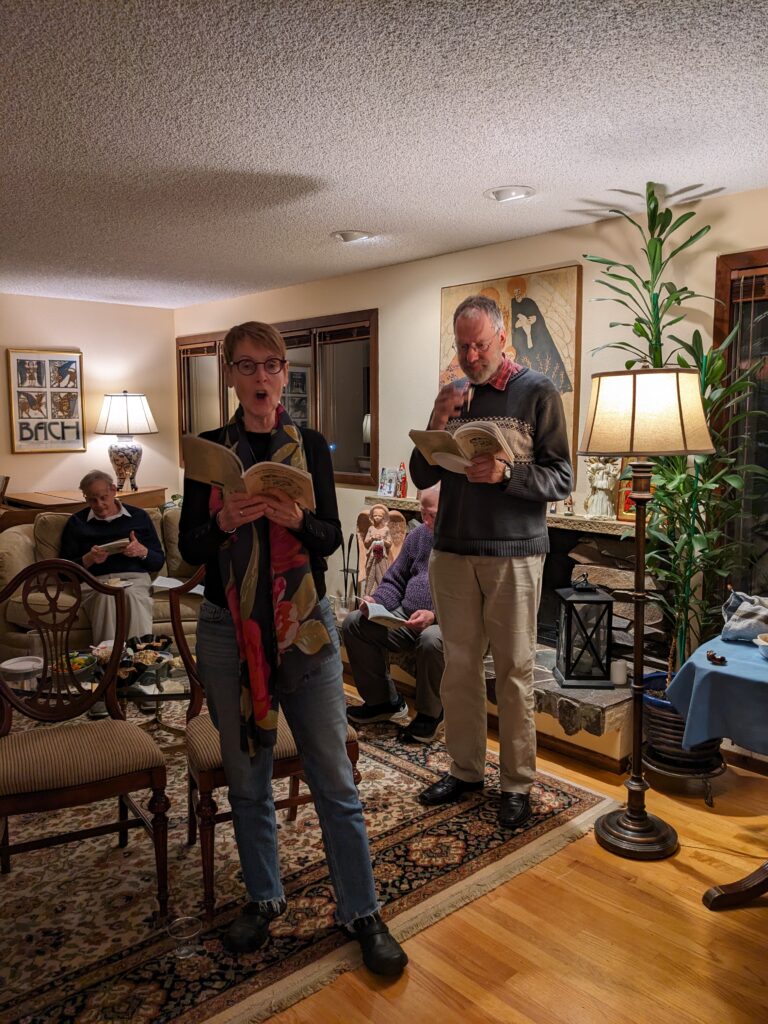
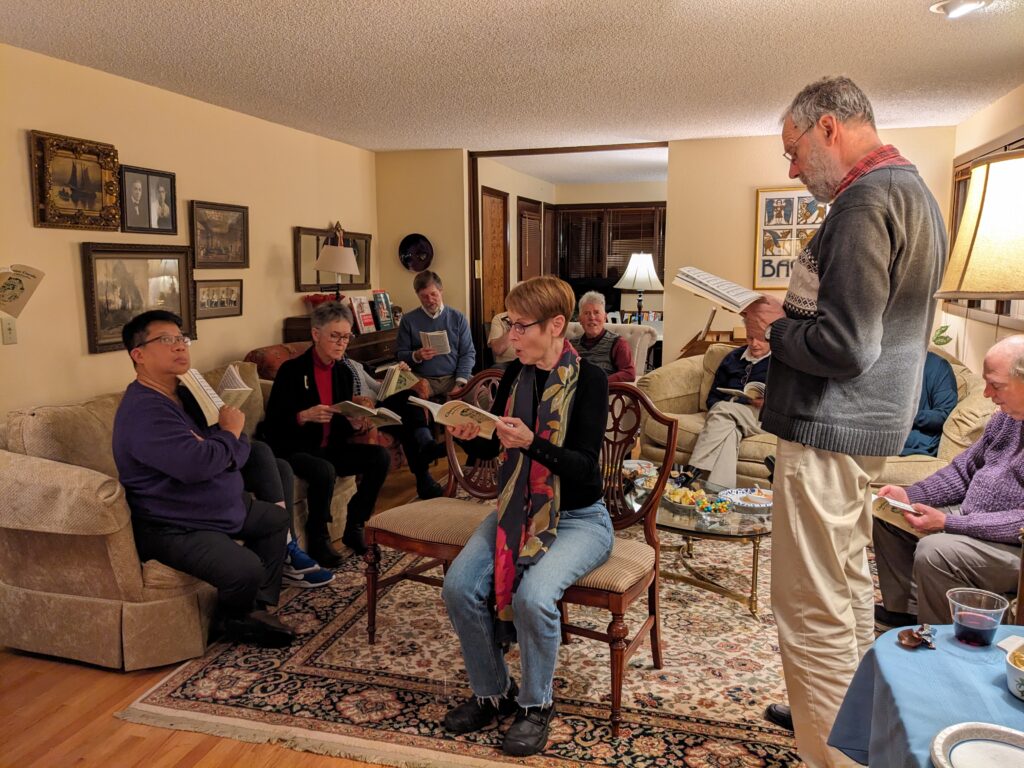
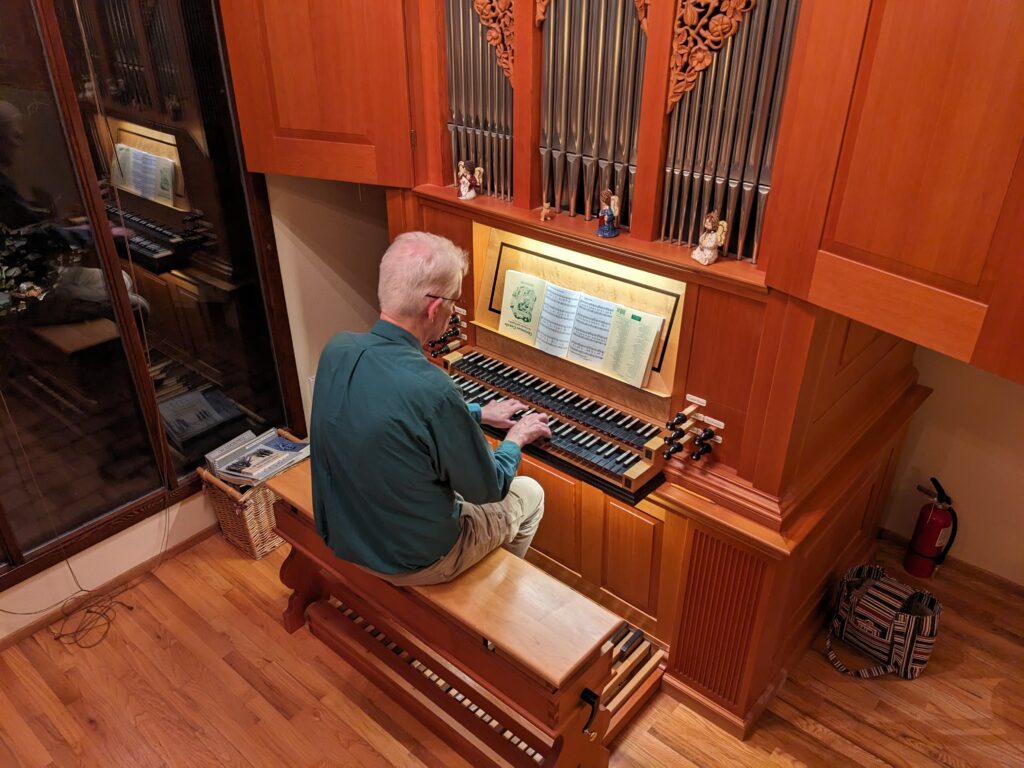
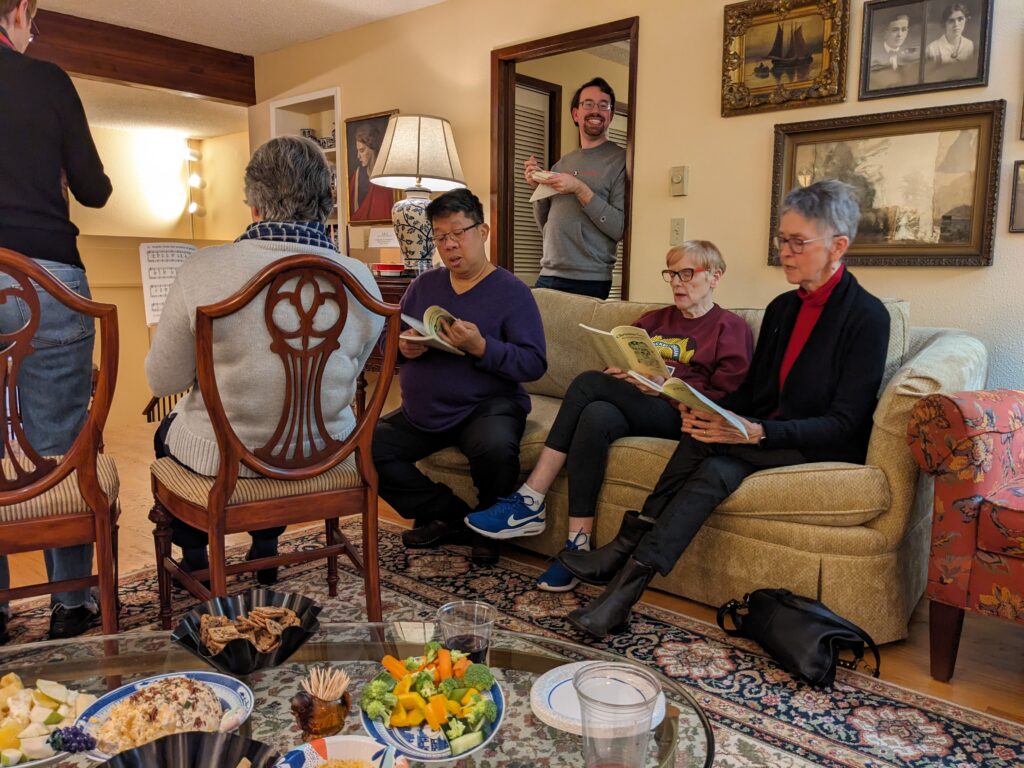
On a keyboard, if you begin at C and traverse the circle of fifths until you reach another C (it takes 12 of them), the C that you reach is not the same pitch that you would reach if you started at C and went up seven octaves by doubling the frequency at each octave. Similarly, if you start at C and apply the 5:4 ratio of a major third twice, the C on which you land is not the same as the C you would get by applying the 2:1 octave ratio of the first C. In order to maintain true octaves on a keyboard, it is necessary to alter the amount of space between half steps in order to make octaves equal. That process is called temperament. There are numerous ways to do it. In equal temperament, in common use on pianos, each half step is equal.
In the seventeenth century, equal temperament was known, but was not common. One was much more likely to find an organ tuned in meantone at that time. Meantone tuning favors perfect thirds at the expense of slightly imperfect fifths. It brings the concept of “personality” to key signatures–a concept that is missing when all keys sound the same, as in equal temperament. The piece that sounds dull on an equally tempered organ can sound colorful, vibrant, and exciting on a meantone organ. Meantone organs are not common in the United States today. There are other unequal temperaments that are considered more flexible.
The Fritts Organ Company is working with an undisclosed client to build a large, new meantone organ in the United States. To prepare for this venture, Paul Fritts, Bruce Shull, and other associates embarked on a tour of meantone organs in The Netherlands and Germany–observing, listening, measuring, and taking notes. They also took pictures and made recordings, and Bruce Shull agreed to share his meantone travelogue with Tacoma AGO members as our November program.
Bruce began the program sitting at a harpsichord, changing the tuning as he talked, to demonstrate the sound of perfect fifths, imperfect fifths, perfect thirds, and imperfect thirds, highlighting the differences between Pythagorean tuning and meantone tuning. Using an illustrative slide as well, Bruce demonstrated that meantone tuning involves taking a small bit from each of the perfect fifths in order to produce 8 pure thirds.
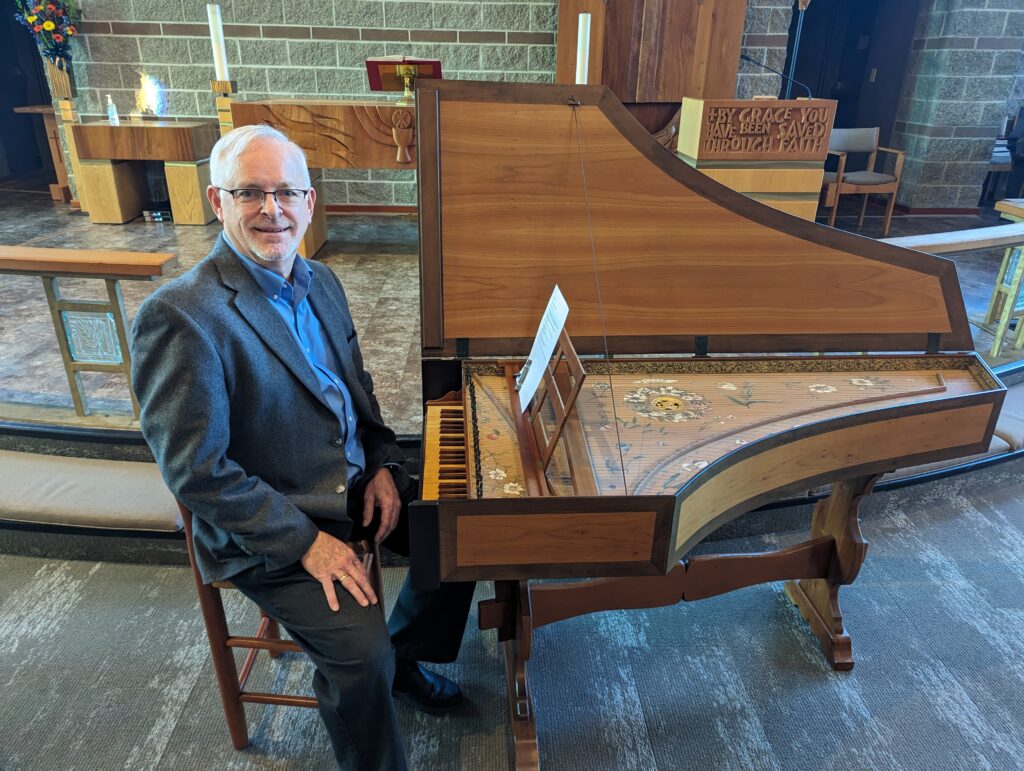
Then, using a slide show and audio recordings, Bruce took us on a tour of organs in Holland and Germany. At many of the locations, a host organist gave a tour of the organ and played for the group. At others, one of the group members improvised in order to demonstrate the sound of the organ.
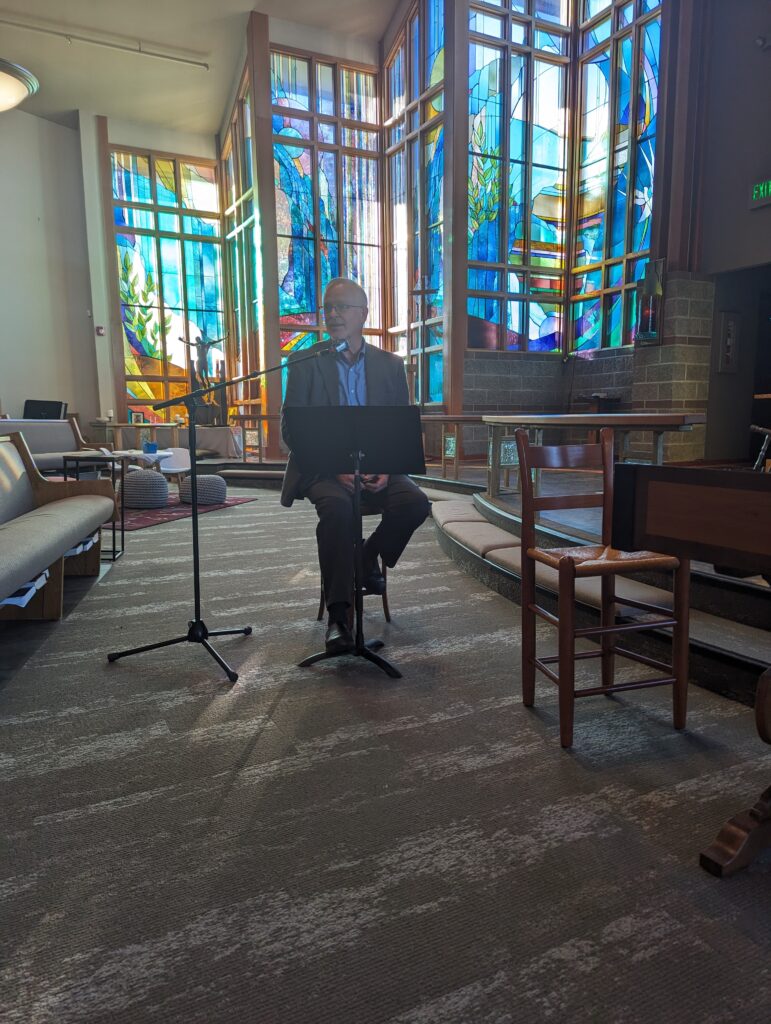
Bruce provided a handout for the group listing the organs discussed, and giving some history of construction and renovation over the years.
20231119-handout-Meantone-Trip-Organ-ListBruce also provided recommendations of three recordings featuring organs that were on the tour for anyone interested in some follow-up listening.

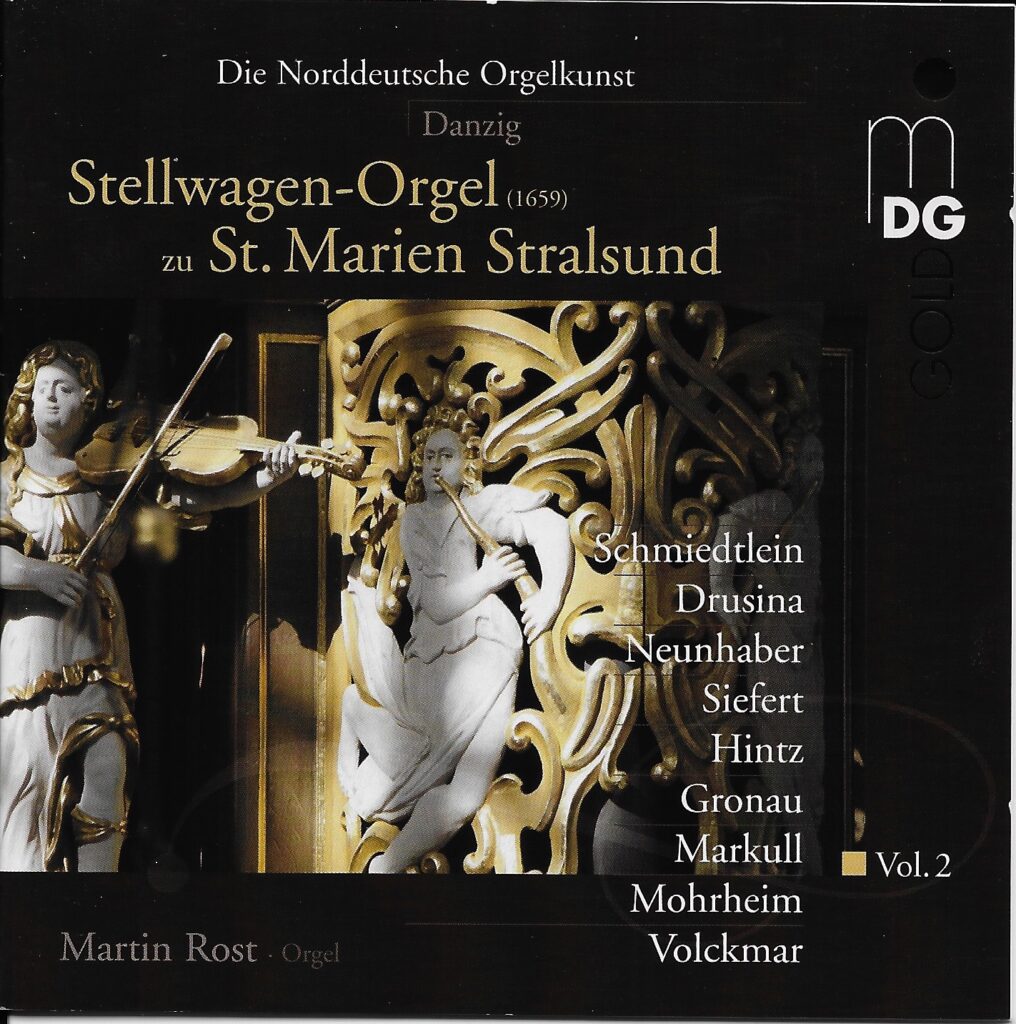
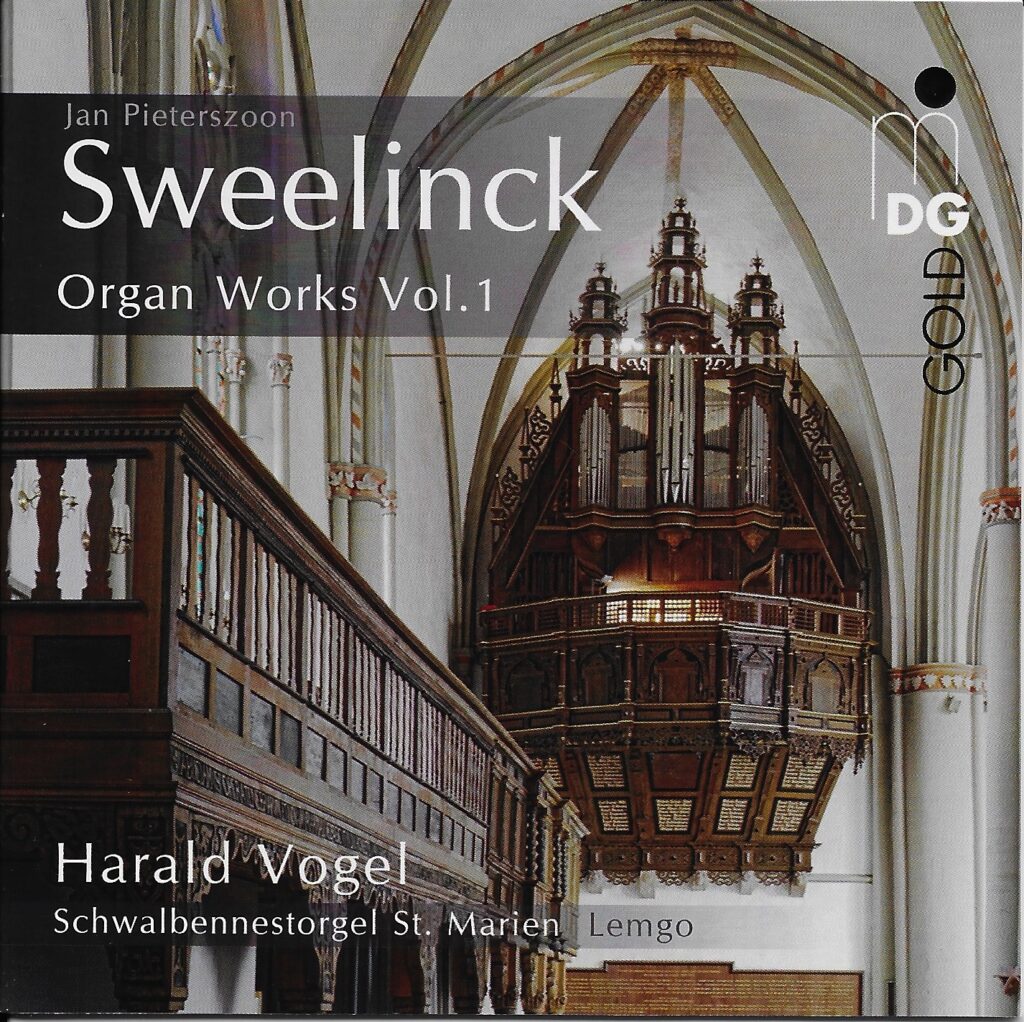
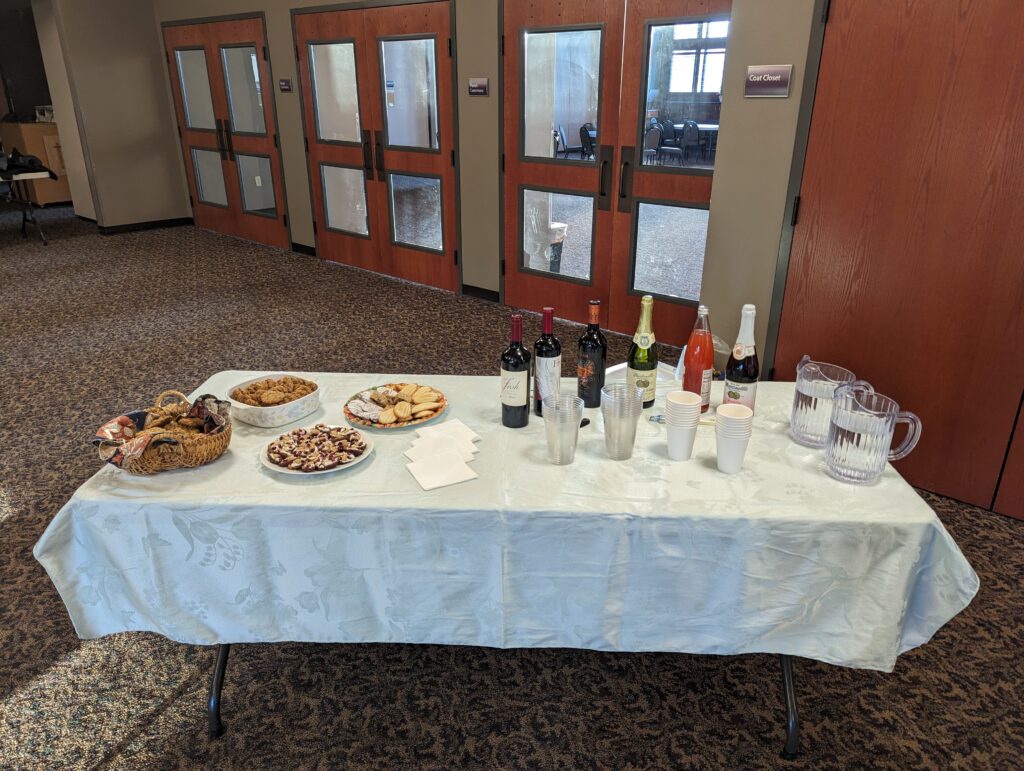
David Dahl published his first volume of organ music in 1999 through the publisher Augsburg Fortress. Entitled “Hymn Interpretations,” the book contains fourteen chorale preludes suitable for use throughout the church year. They range in complexity and length, with some pieces suitable for use as hymn introductions, and others as voluntaries. The book has been out of print for a number of years, and thus began the idea of reviving and performing this work at the AGO program on October 21, 2023 at Christ Episcopal Church in Tacoma, Washington.
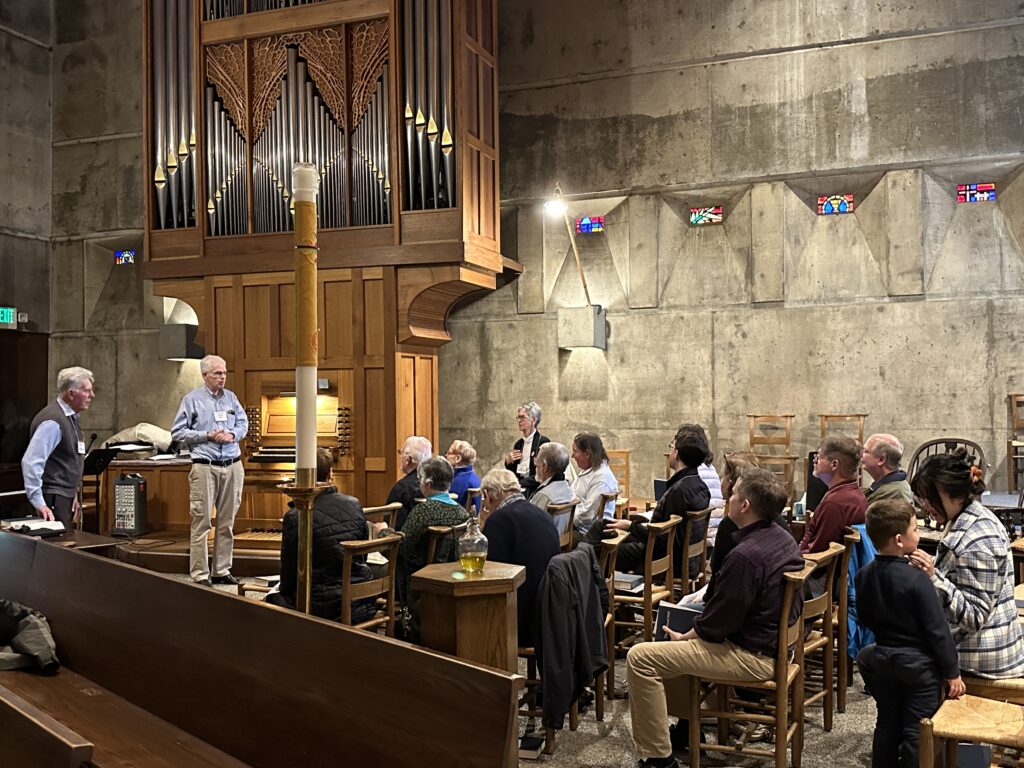
The idea of this publication wasn’t just David’s. Norma Aamodt-Nelson, one of his former students, had just accepted a job at Augsburg Fortress. She contacted David to see if he had any interest in publishing a volume of pieces based on hymn tunes. At that time, David was performing frequently, both in recitals and hymn festivals, and had accumulated a cache of pieces that he had written for one occasion or the other. Interestingly, and for reasons unknown to David, Augsburg named each piece for a hymn text rather than following the convention of naming a piece for the tune.
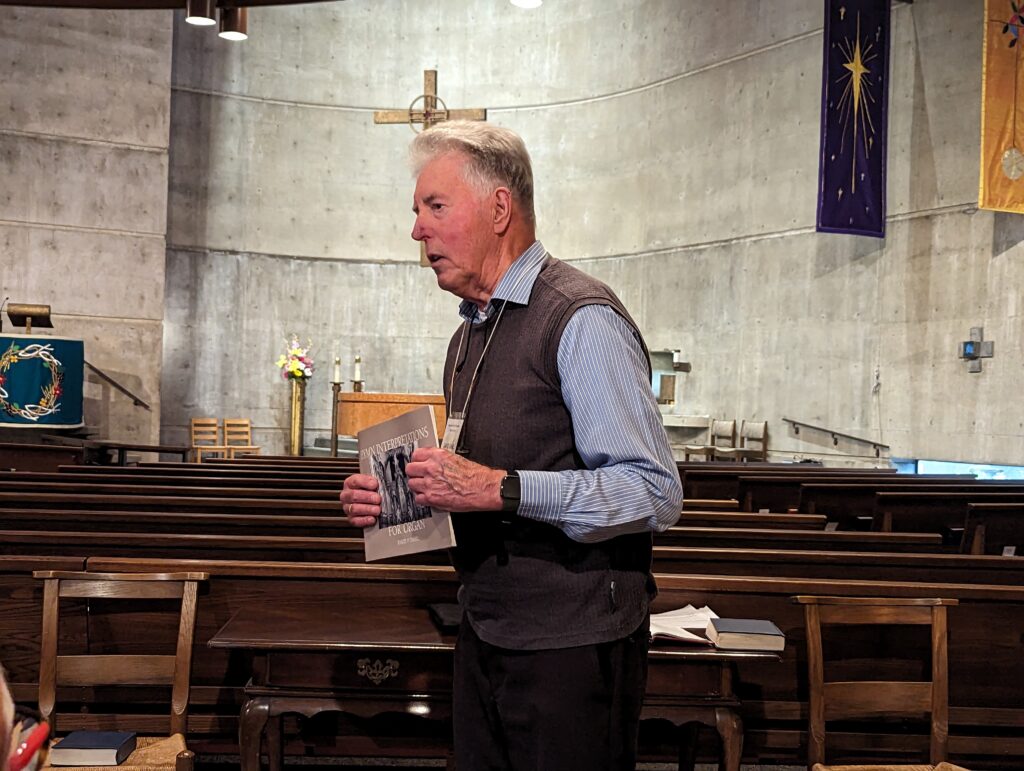
In considering this program, the program committee sought a mix of history, pedagogy, and performance. Rather than simply playing all of the pieces, the decision was made to select ten of them (it ended up being eleven), and for each of them, present some history of the tune, notes from the composer, and finish with a performance of the piece. In addition, for about half of them, the audience sang two verses of the hymn following the performance.
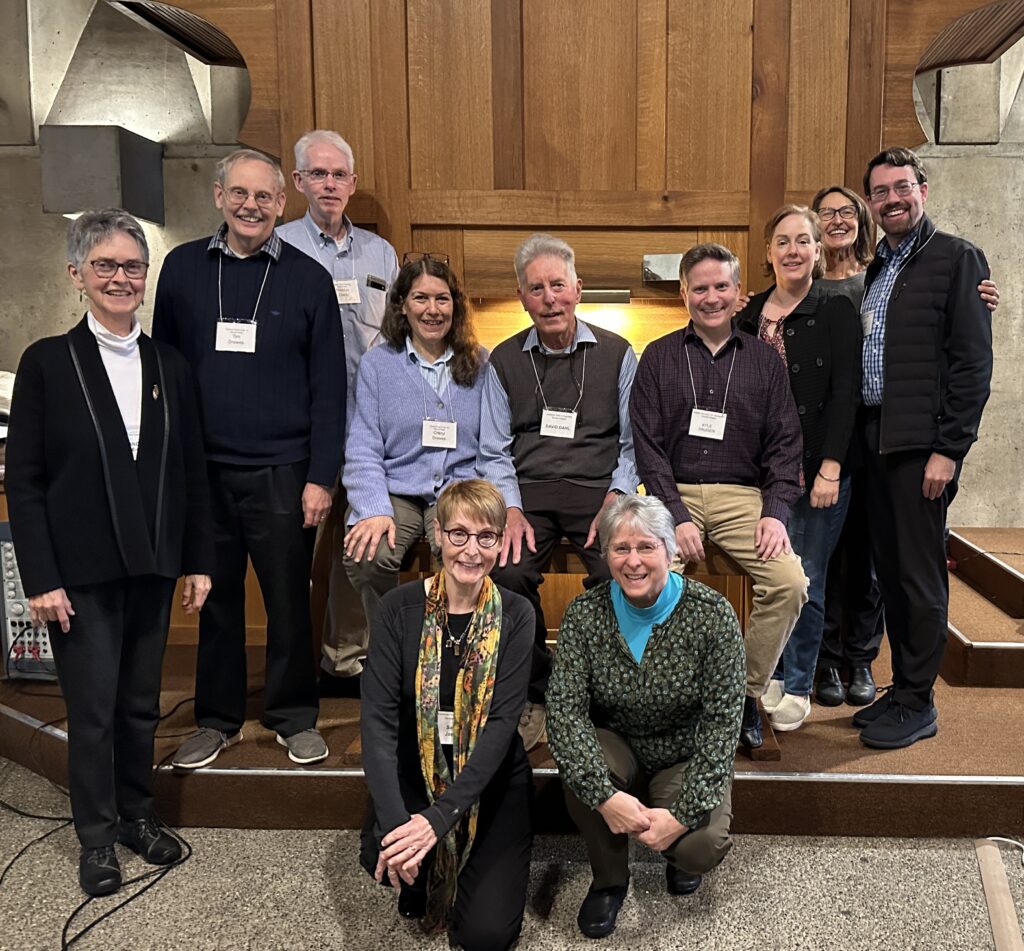
An AGO program featuring a composer and eleven organists (it ended up being ten due to illness) is definitely a Tacoma record, and could even be a record for a larger AGO scope. David made the decisions about which pieces to use, and recruited organists to play them. He helped each of the organists with interpretation and registration suggestions. He prepared his own mental notes concerning his oral presentation for each piece. The coordination of this program alone was a Herculean task!
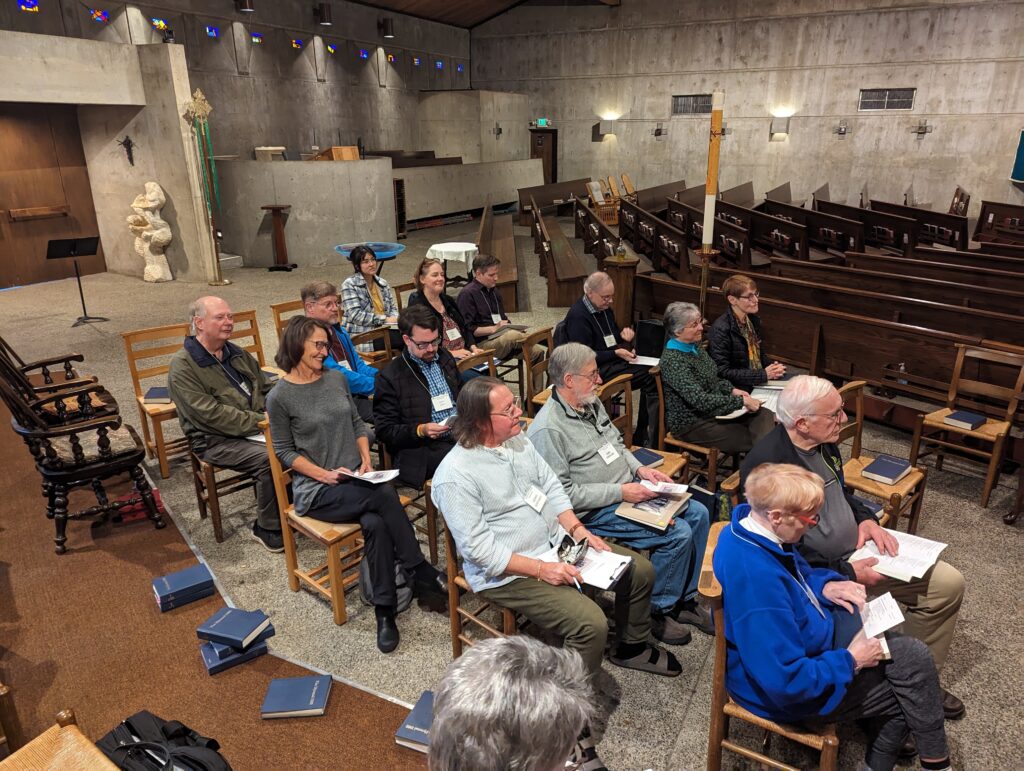
The chosen hymn tunes represent a variety of nationalities and time periods.
This German tune, later adopted by the English, is a well known setting for several popular texts. David’s piece opens with a keyboard flourish followed by fugal treatment of the first and last lines of the hymn. Nancy Ferree-Clark offered a history of this tune. Sheila Bristow played the chorale prelude, and then accompanied two verses of the text “All Creatures of Our God and King.”
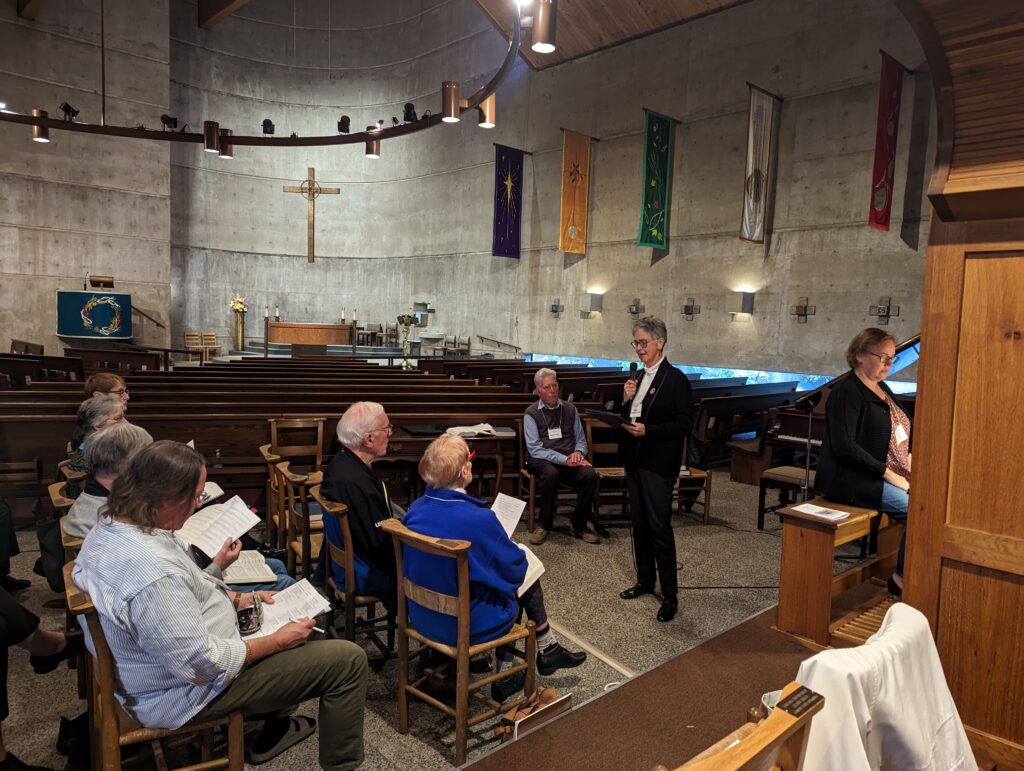
The piece was written in 1984 and dedicated to Paul Fritts and Ralph Richards upon the dedication of the Fritts-Richards organ at St. Alphonsus Parish in Seattle. David recalls that when the service began, a thurifer came down the aisle swinging incense, followed by a priest carrying holy water which he splashed on the organ. At that moment, the organ was heard for the first time: a fanfare based on the opening phrase of LASST UNS ERFREUEN, followed by a fughetta, then followed by the congregation singing with the organ. Fortunately the organ did not suffer any water damage.
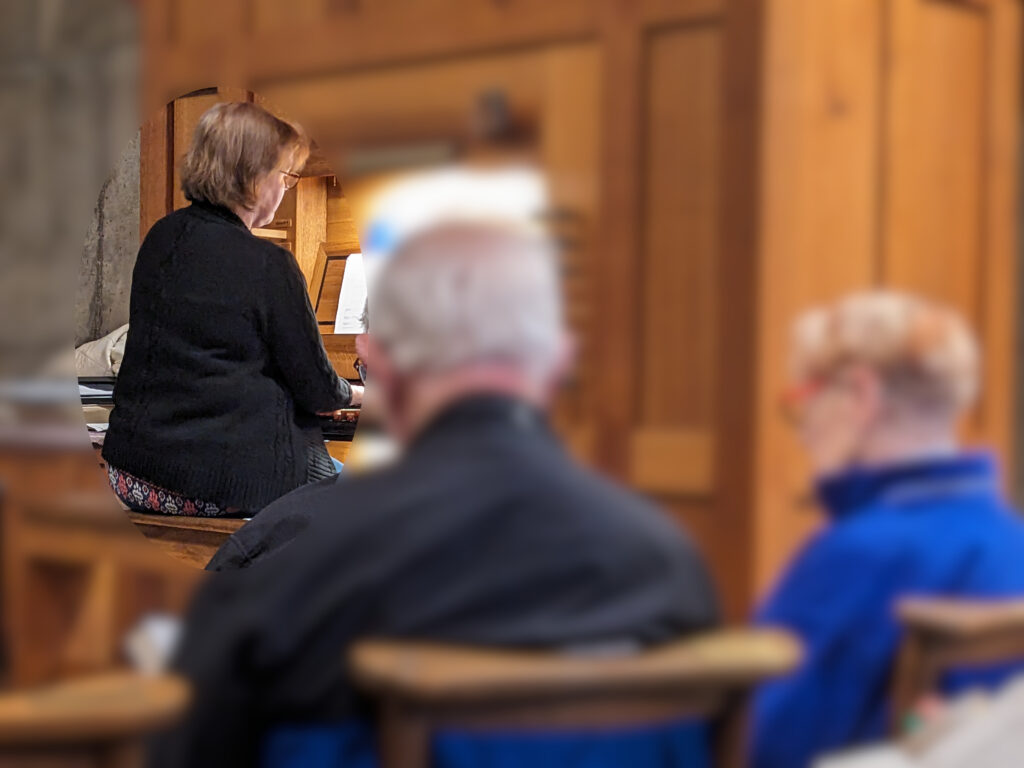
This piece opens with counterpoint based on the first line followed by a soprano/pedal canon that includes the first two lines and the last line of the hymn. Due to illness of the designated organist, Tom Clark played this piece following which the group sang two verses of the hymn “Holy God We Praise Thy Name.”
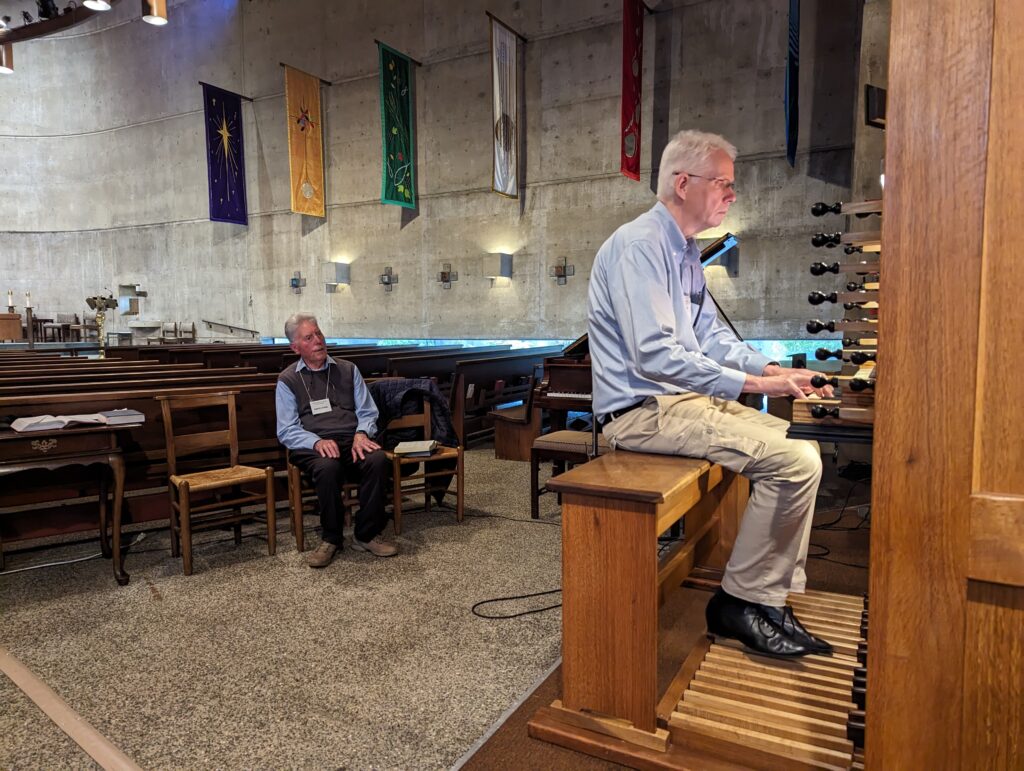
The piece is dedicated to Ruth Schepman Thorsell, a PLU organ student who became organist at a large Lutheran church in the Minneapolis area. David is not sure whether the piece was ever played there, but one must think that it was.
As David said, “If you want to get a congregation’s attention, use a trill.” And so this well known chorale setting opens with a four-measure trill over a contrapuntal setting of the first line. The history of this tune was presented by Kyle Haugen, followed by a rendition of the chorale prelude. Afterward, the attendees sang two verses of “Now Thank We All Our God” using the older, rhythmic version in which the melody notes do not have equal values.
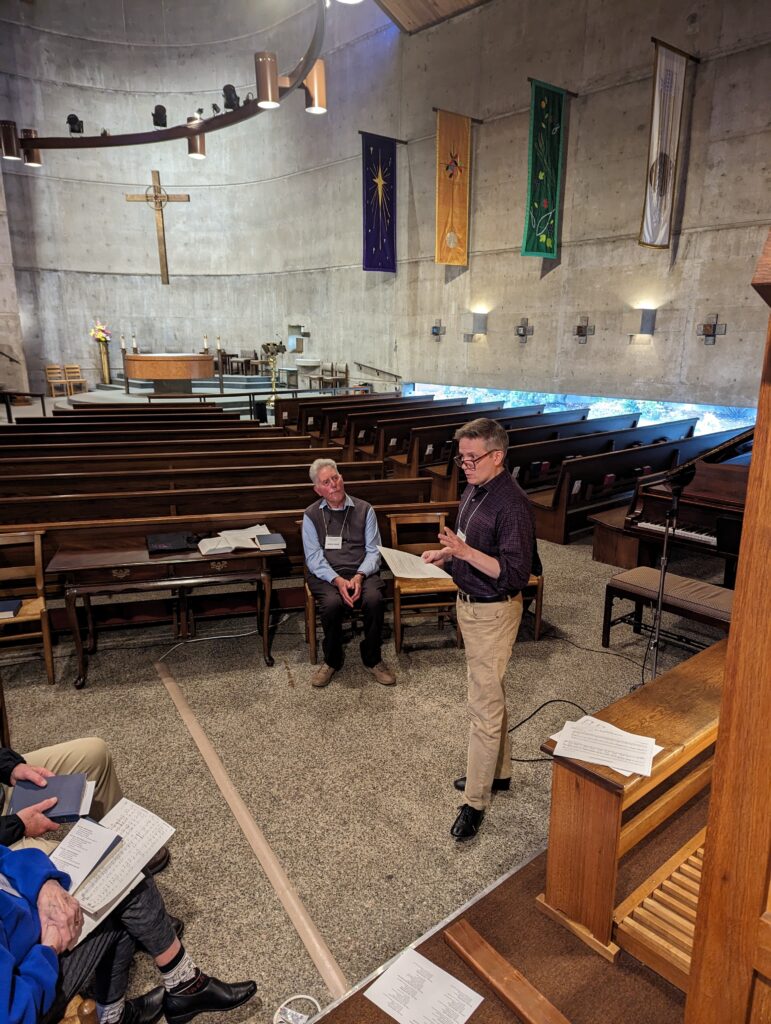
The piece was written for a hymn festival unrelated to Christ Episcopal Church, but was dedicated to Meg Mansfield who, at that time, was the assistant conductor of the Christ Church choir.
Wyatt Smith gave a history of this venerable hymn tune, then began playing the multi-tonal imitative fanfare followed by a fughetta based on the first phrase.
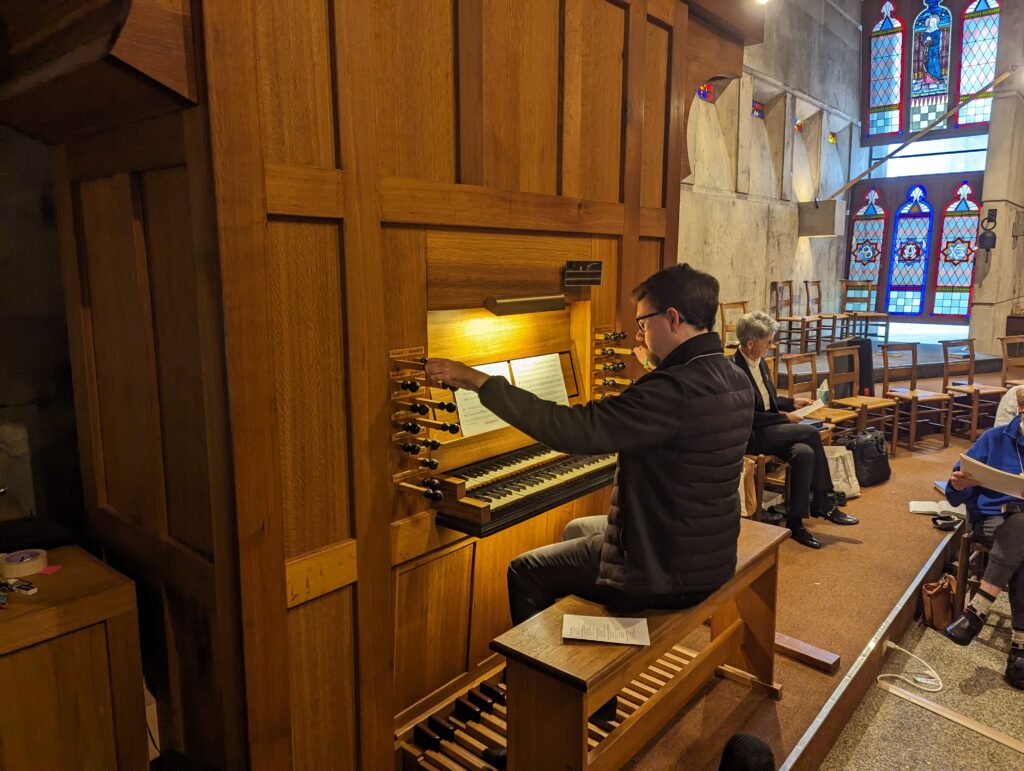
David doesn’t remember the occasion for which this piece was composed, but it is dedicated to Rodney Gherke, a former student. Rodney’s father invited David to the recital at which he heard his first tracker organ, a life-changing event.
Shari Shull presented a history of this tune and then, in a deviation from the established pattern, the chorale prelude was sandwiched between two sung verses. Shari accompanied the audience singing the first verse, played the chorale prelude, then accompanied the audience in singing a second verse.
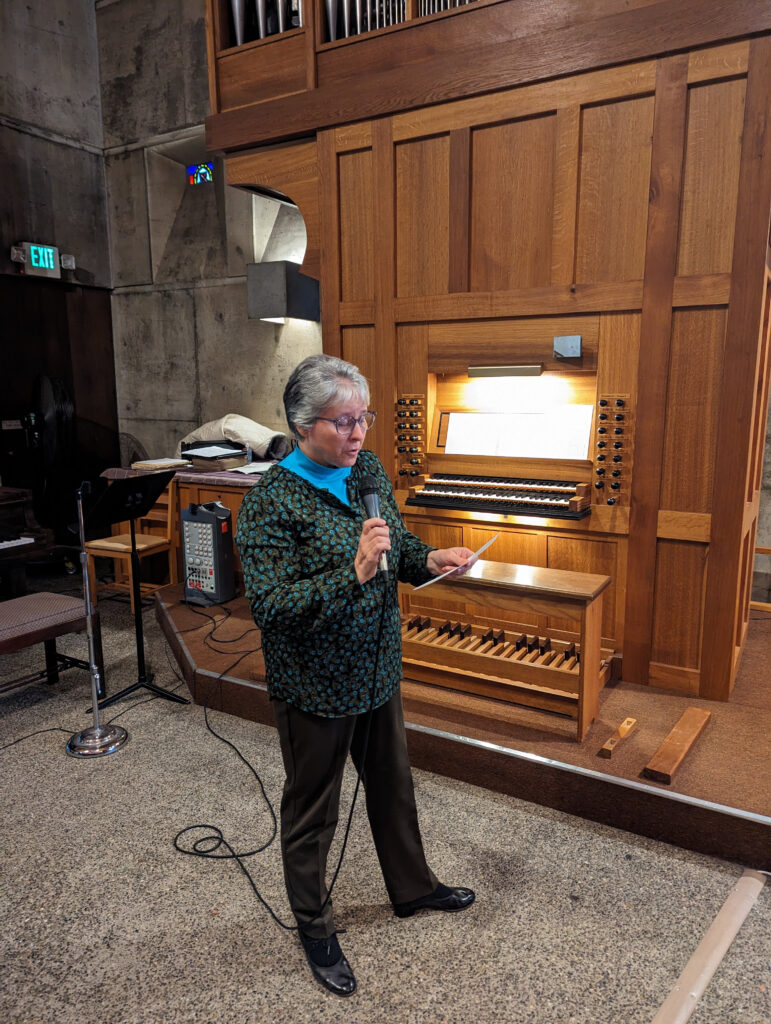
The piece features an ostinato in the pedal with repeating themes constructed on the melodic idea of the first phrase of the tune. The piece is dedicated to organ builder John Brombaugh. It was written for and introduced at an Advent recital that David played at Central Lutheran Church in Eugene, Oregon.
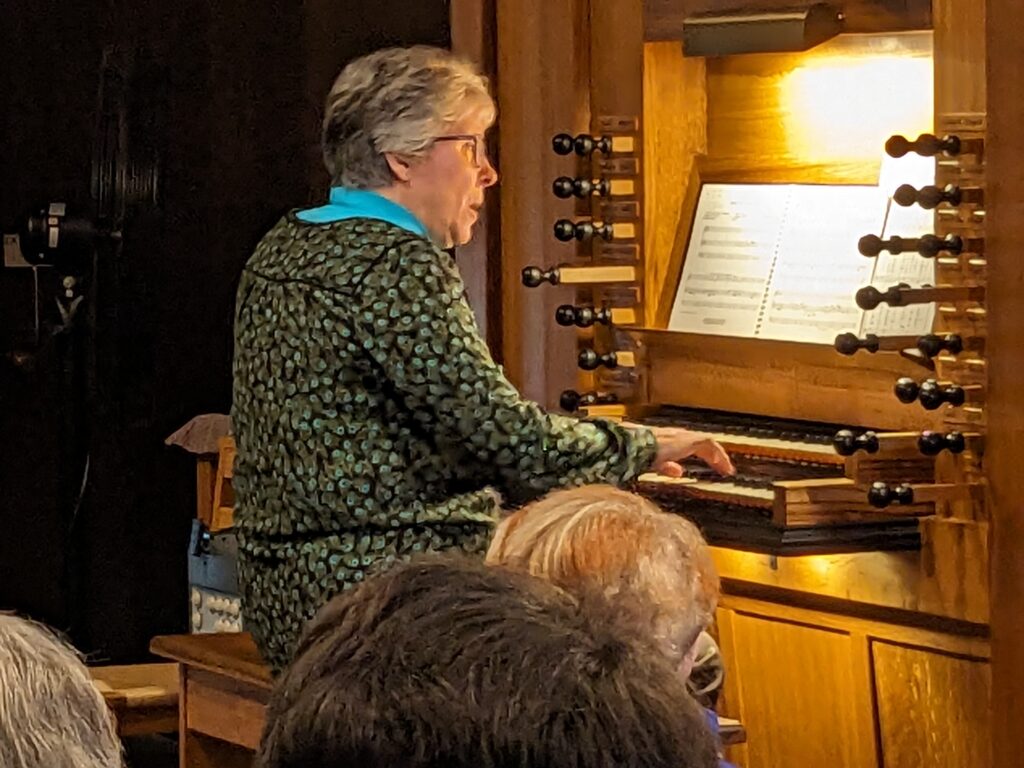
Tom Clark presented a history of this tune, including the fact that both triple meter and a duple meter versions of this tune descended from the same chant, and are named more or less the same thing in hymnals. The triple meter tune, on which David’s piece is based, has been set to multiple texts including Advent and Easter. David elected to use the Easter text during the presentation, so the attendees sang two verses of “That Easter Day with Joy was Bright” following the performance.
This tune was not written for a particular occasion, but because David wanted a “strong, festive setting” that could be used as a postlude on both Christmas and Easter. David used it numerous times as a postlude for the Christmas Eve service at Christ Episcopal Church. He dedicated this piece to Bruce Neswick both to honor him and because David was
“sure he would have no trouble playing it.”
Tim Drewes presented a detailed history of this tune, attributed to Louis Bourgeois who was born in Paris in 1510. Bourgeois later moved to Geneva and contributed to the Genevan Psalter.
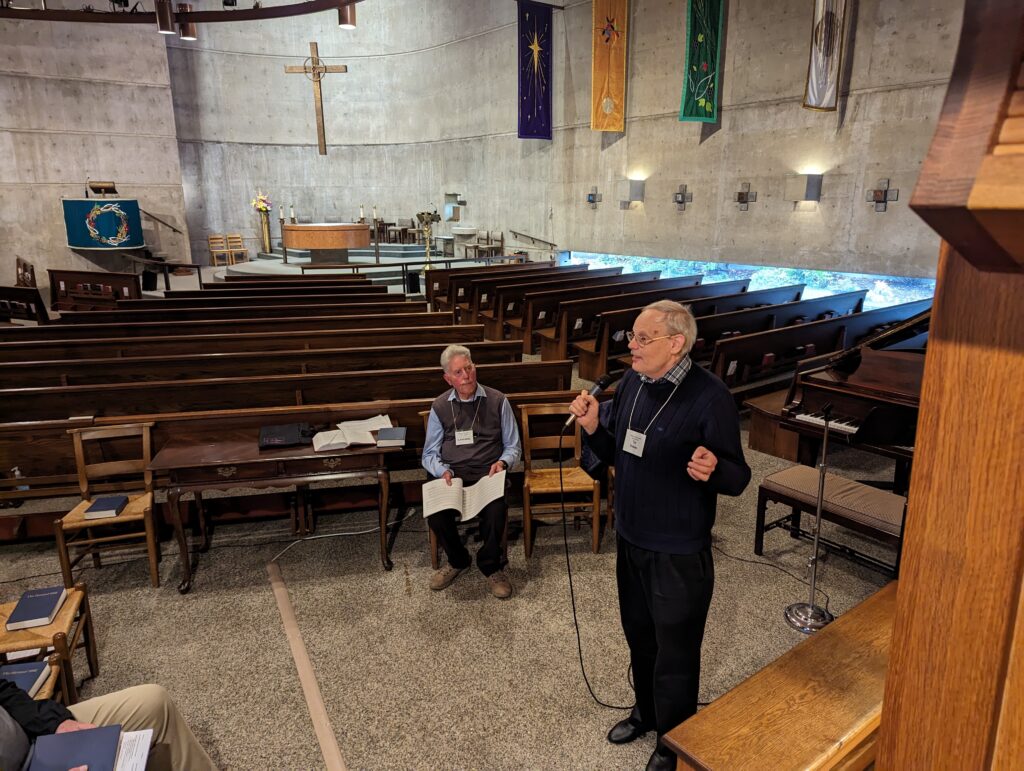
David wrote this piece for the dedication of the Pasi organ at Trinity Lutheran Church in Lynnwood, WA, and dedicated it to Martin and Barbara Pasi. It is a trio based on a double ostinato between pedal and the left hand, with the melody on a cornet on the second manual.
Following David’s discussion, Tim played the musical work for the audience.
Nancy Ferree-Clark discussed the history of this tune prior to playing the piece based on it. It is an early American folk tune which, in 1835, was published in Southern Harmony , a shape note hymn and tune book compiled by William “Singin’ Billy” Walker. It is most often matched with the hymn text “Come Ye Sinners Poor and Needy” written by Joseph Hart in 1759, a self-confessed “loose backslider and bold-faced rebel.” Nancy remembers singing this beloved hymn in the rural United Methodist church where she grew up during the call to confession or altar call.
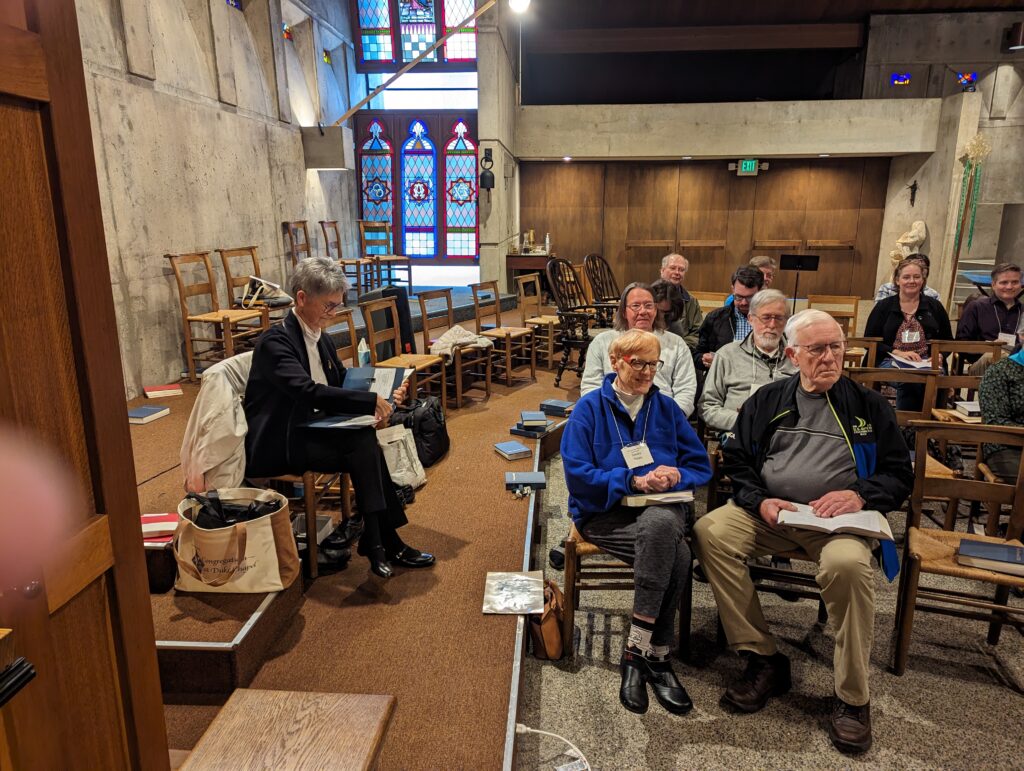
David’s setting of this tune is equivalent to 3 stanzas of the early American hymn, making it more suitable as a stand-alone piece than a hymn introduction. It uses the techniques of canon over a descending pedal line, rhythmic and melodic alteration, and canon at the 5th over a double pedal point. It was originally written for a hymn festival but is also suitable as a prelude or postlude.
Cheryl Drewes, dean of the Tacoma chapter, presented the history of this well known tune that is almost always associated with the text “How Firm a Foundation.” This tune, one of two early American tunes featured, is from a group known as “fuguing tunes.”
In her rendition, the organ sounded surprisingly like a bagpipe thanks to some fancy ornamentation!
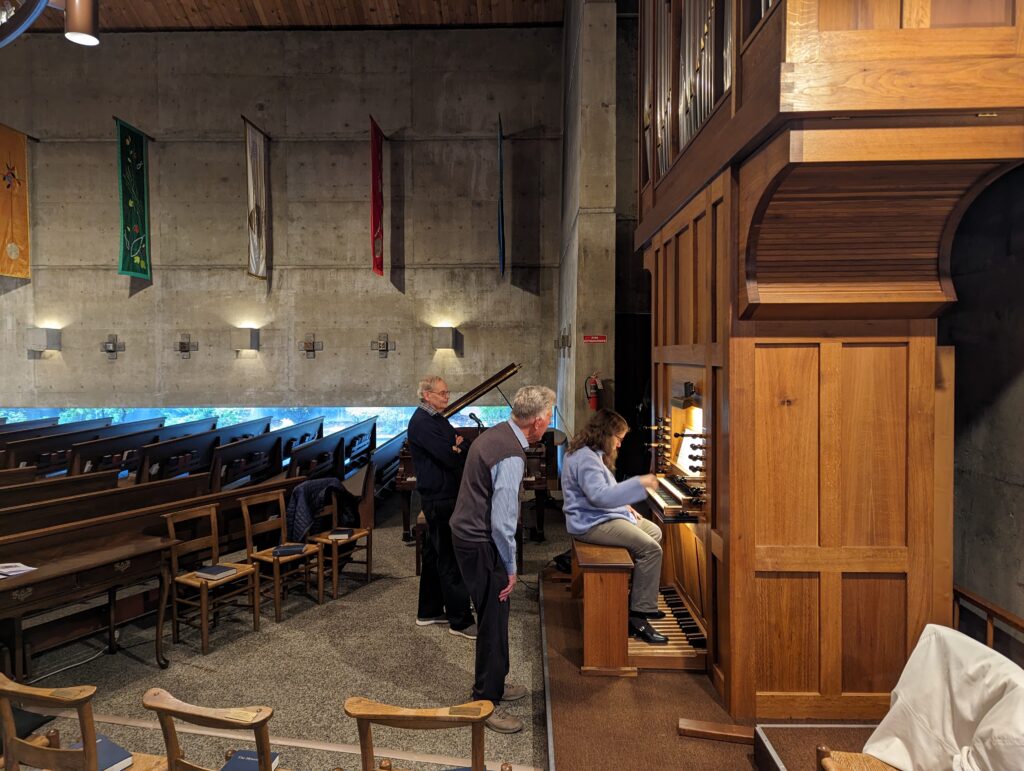
David dedicated this piece to Patricia Thurman Harris, organist at First Presbyterian Church, Klamath Falls, OR. The structure includes a 2-part canon and 4-part canon over a double pedal point drone. The pedal drone is intended to be a symbol of the firm foundation.
Prior to the beginning of his tenure as organist at Christ Episcopal Church, David had never heard this contemporary American tune, but it quickly became one of his new favorites. The tune was written by Peter Cutts, born English, but who spent much of his working life in the United States (thus we can claim the tune as American!). It usually bears the text “Like the Murmur of the Dove’s Song.” After Jan Regier presented the history of the tune, David turned to the piano to play the melody for the audience as he began to talk about his experience with the tune.
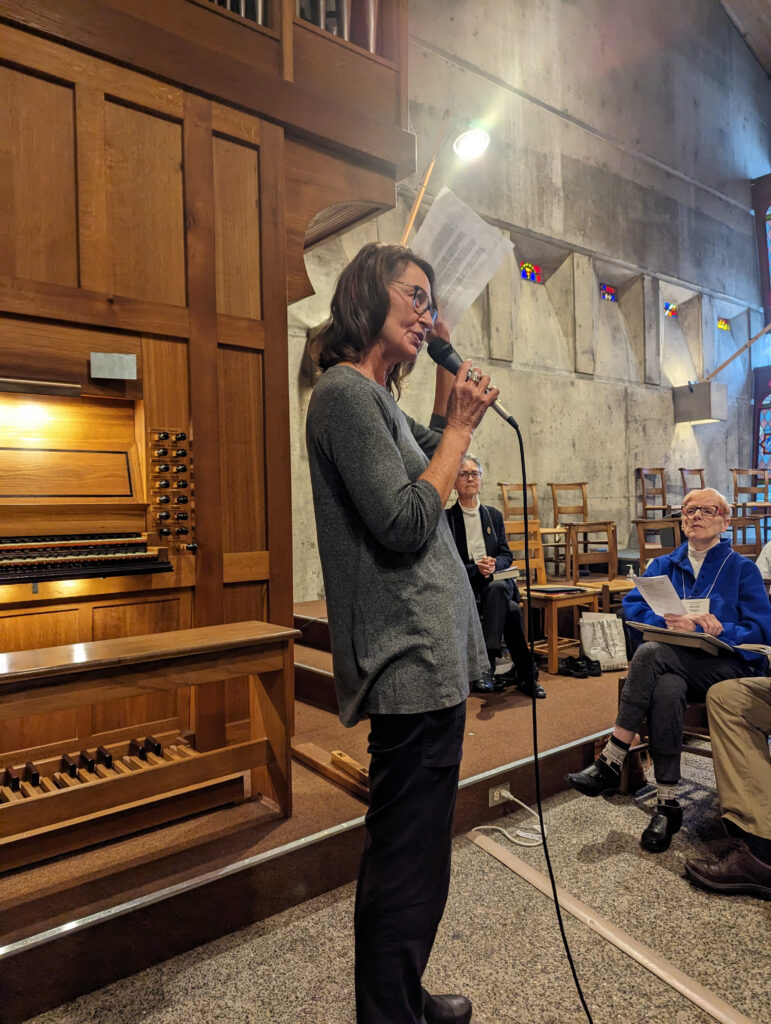
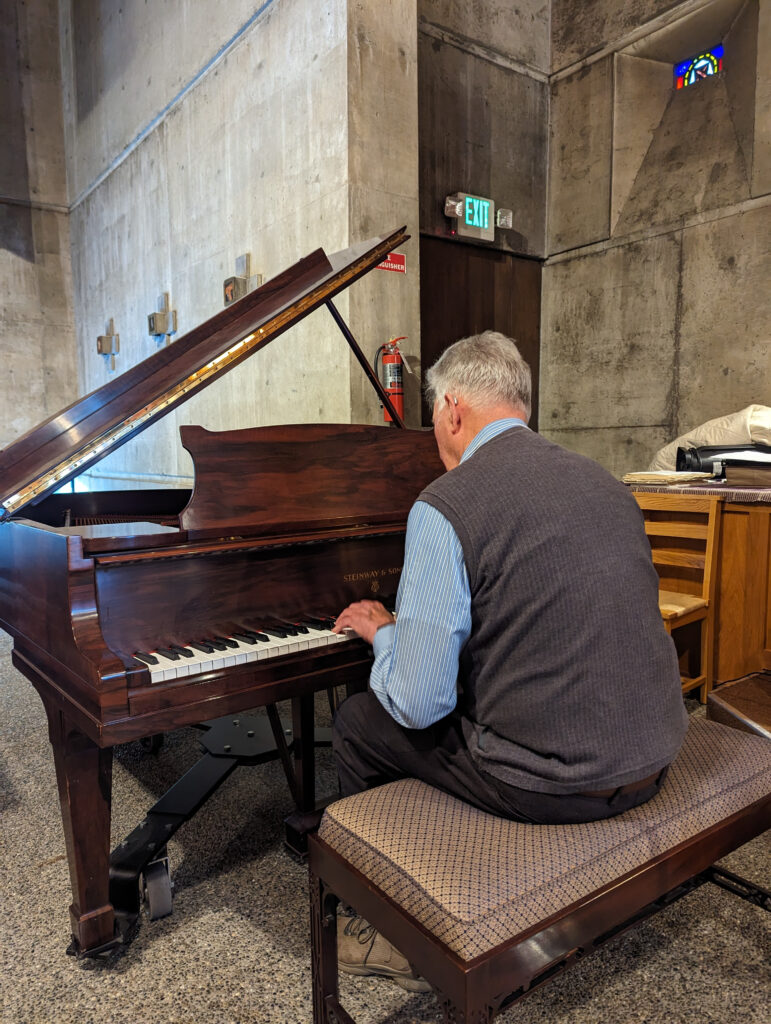
David was on a plane returning from a convention of the Association of Anglican Musicians in Houston, TX when he looked out the window, noticed the wispy clouds and thought of a bird flying and visualized his composition. It would be a good story to think that he wrote it down on a cocktail napkin, but he did it after he got home.
Following David’s introduction, Jan Regier played the composition on the organ, using flutes to render the quick fluttering figuration that suggests the flight of a bird.
Satya Jaech recalled the history of VINEYARD HAVEN, written by Richard Dirksen during his time at the National Cathedral in Washington, DC, as a setting for the text “Rejoice Ye Pure in Heart.”
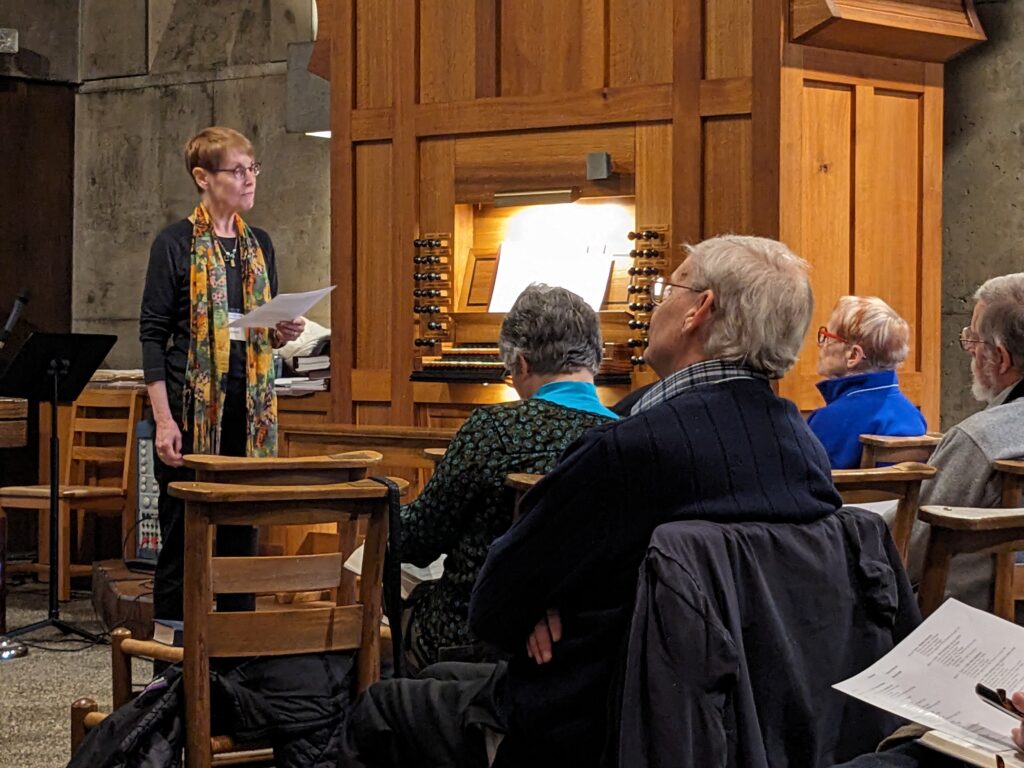
David does not recall a specific purpose for his composition, but his motivation was the unique melodic shape of the refrain. The composition was dedicated to Bruce Stevens, a member of the Organ Historical Society, and a champion of early American organs.
The tune is complex, as is the harmony. Satya played the tune first for the audience, then played David’s piece which includes complex rhythms of 3 against 2. The piece is suitable for use as a hymn introduction, so Satya went straight into the four-part setting of the hymn following David’s piece.
20231021-ago-programThis PDF image is of the printed program. Its first page is the front and back of the program; its second page is the inside of the program. Depending on your browser, you can hover over the PDF or click on it to select the page.
Following the performances, Dean Cheryl Drewes thanked David for his contributions to the program and his contributions to music.
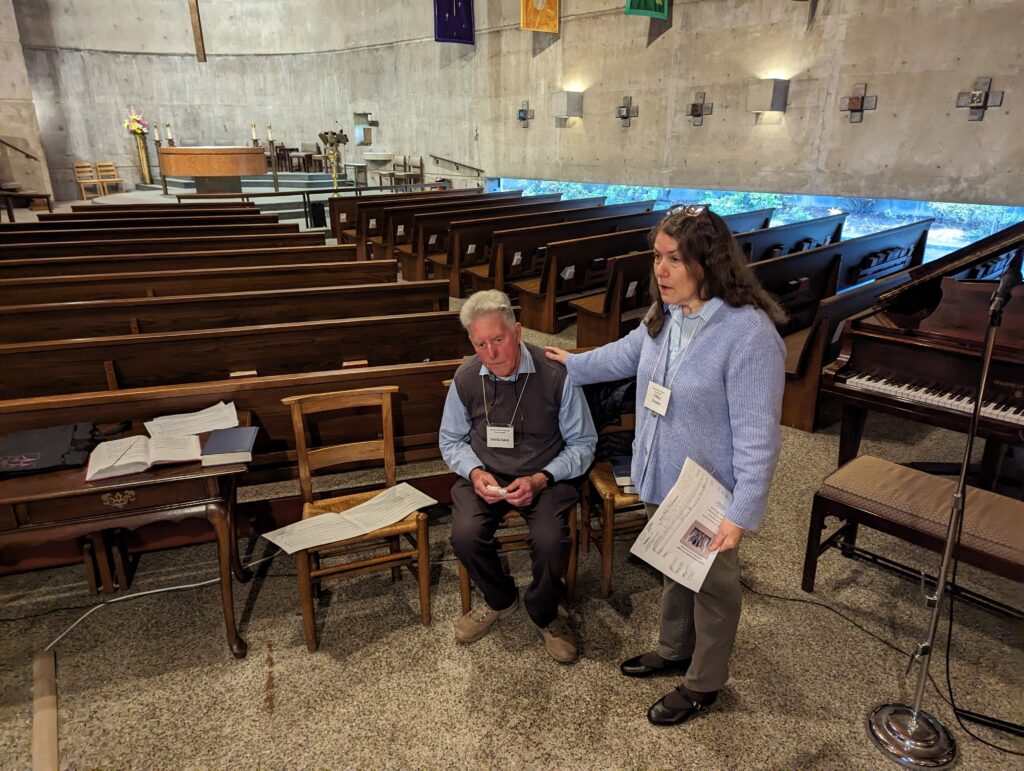
David then entertained questions from the audience. The discussion continued as the group headed to the narthex for coffee and doughnuts.
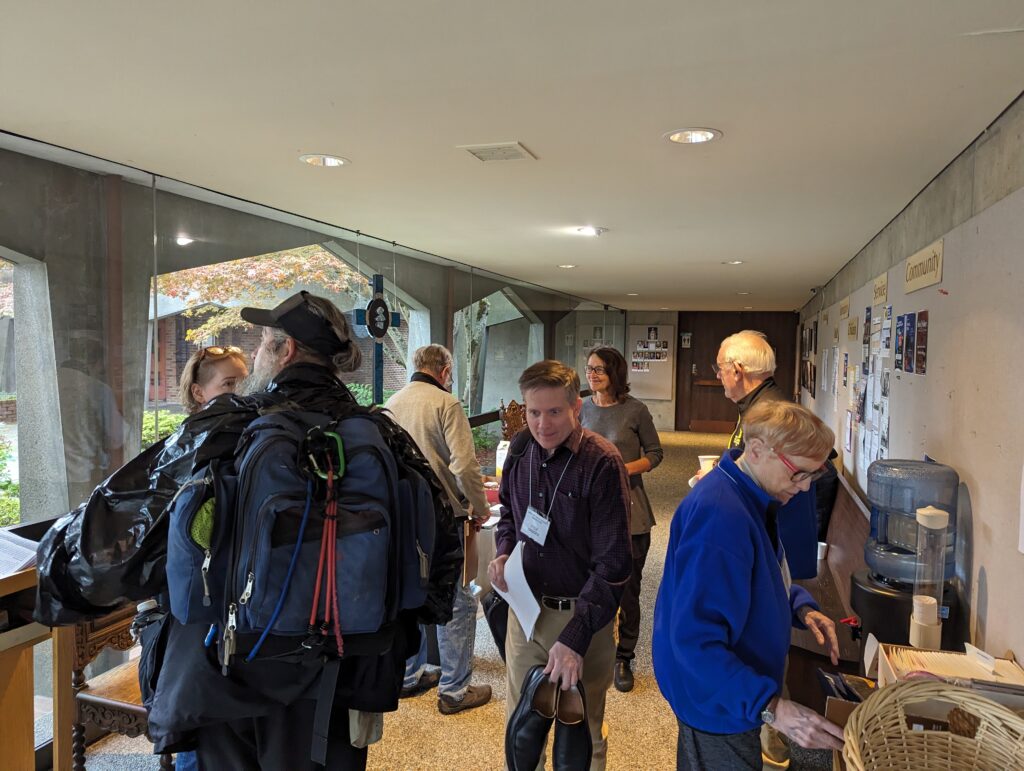
Hymn Interpretations is still out of print, but has been made available for purchase and download at the Augsburg Fortress store.
David Dahl contributed significantly to this article.
In addition to the author, photographs were provided by Cheryl Drewes, Nancy Ferree-Clark, and Loi Le.
We are grateful to the copyright holder Augsburg Fortress for giving us permission to duplicate and distribute pieces to the organists performing them, and for permission to perform these pieces in public.
Thanks also to Christ Episcopal Church for the use of their facility, the hospitality of their sexton Timothy Williams, and the splendid Brombaugh organ.
I find autumn an invigorating season, from both the changes in the natural world and the familiar charge of back-to-school energy. This energy usually reminds me that learning is a life-long process. In the context of AGO, continuing education is foundational, as its mission is to foster a thriving community of musicians who share their knowledge and inspire passion for the organ.
If you’ve thought this might be the time to brush up on old skills or learn new ones, here are some options:
Performance skills-
Church music skills-
Our own chapter’s programming includes a wonderful upcoming event on Oct 21: Hymn interpretations with David Dahl.
AGO national has a lot of resources on its website, and also produces educational webinars. I’m planning on attending one on Oct 2nd, “Being Yourself in the Spotlight of Music Ministry”.
Wishing you happy studies and an energized fall!
Sheila Bristow
Past Dean, Tacoma Chapter
If you have never taken the time to establish a password on our Tacoma AGO website, this might be a good time to do it. Members who log in to the site see additional content that is hidden from the public, see more complete search results, can place classified ads, and have enhanced access to the calendar.
Our AGO calendar contains events of general interest to Tacoma organists, including our own chapter events and other musical events that feature our members. Have you ever wished that you could subscribe to our calendar and have these events automatically show up on your phone? It’s easy. Just log in to the AGO website, look at the “For Members” section of the menu in the left column, and select “Subscribe to the Calendar.” You can also submit events to the calendar–just make sure your addition follows the calendar policy.
If you have indicated on the national AGO site that you want to be listed as a substitute, or want to teach, a classified ad is automatically created for you on our local site. Once you create a password, you can claim that ad and add additional details. If you’re looking for a job, you can also create a classified ad indicating your availability. Non-members can read ads and can place ads looking for the services, but only members can place ads looking for work. The classified ad system acts as an intermediary between you and the public, forwarding responses to you and forwarding your answers to the public. The website never exposes your email address to the public unless you choose to include it in the ad description.
Establishing a password is easy. Just follow the instructions at the Instructions for New Members page.